Advertisement

How Cruise Control Systems Work
- Share Content on Facebook
- Share Content on LinkedIn
- Share Content on Flipboard
- Share Content on Reddit
- Share Content via Email
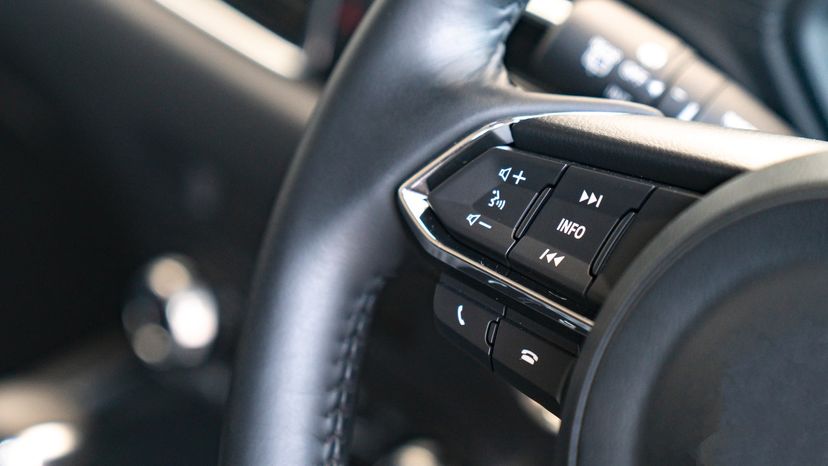
Cruise control is an invaluable feature on American cars. Without cruise control, long road trips would be more tiring, for the driver at least, and those of us suffering from lead-foot syndrome would probably get a lot more speeding tickets.
Cruise control is far more common on American cars than European cars, because the roads in America are generally bigger and straighter, and destinations are farther apart. With traffic continually increasing, basic cruise control is becoming less useful, but instead of becoming obsolete, cruise control systems are adapting to this new reality -- soon, cars will be equipped with adaptive cruise control, which will allow your car to follow the car in front of it while continually adjusting speed to maintain a safe distance.
In this article, we'll learn how a conventional cruise control system works, and then we'll take a look at adaptive cruise control systems that are under development.
What Cruise Control Does
Cruise control acceleration and deceleration, controlling the cruise control, adaptive cruise control.
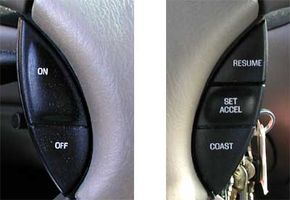
The cruise control system actually has a lot of functions other than controlling the speed of your car. For instance, the cruise control pictured below can accelerate or decelerate the car by 1 mph with the tap of a button. Hit the button five times to go 5 mph faster. There are also several important safety features -- the cruise control will disengage as soon as you hit the brake pedal, and it won't engage at speeds less than 25 mph (40 kph).
The system pictured below has five buttons: On, Off, Set/Accel, Resume and Coast. It also has a sixth control -- the brake pedal, and if your car has a manual transmission the clutch pedal is also hooked up to the cruise control.
- The on and off buttons don't actually do much. Hitting the on button does not do anything except tell the car that you might be hitting another button soon. The off button turns the cruise control off even if it is engaged. Some cruise controls don't have these buttons; instead, they turn off when the driver hits the brakes, and turn on when the driver hits the set button.
- The set/accel button tells the car to maintain the speed you are currently driving. If you hit the set button at 45 mph, the car will maintain your speed at 45 mph. Holding down the set/accel button will make the car accelerate; and on this car, tapping it once will make the car go 1 mph faster.
- If you recently disengaged the cruise control by hitting the brake pedal, hitting the resume button will command the car to accelerate back to the most recent speed setting.
- Holding down the coast button will cause the car to decelerate, just as if you took your foot completely off the gas. On this car, tapping the coast button once will cause the car to slow down by 1 mph.
- The brake pedal and clutch pedal each have a switch that disengages the cruise control as soon as the pedal is pressed, so you can shut off the cruise control with a light tap on the brake or clutch.
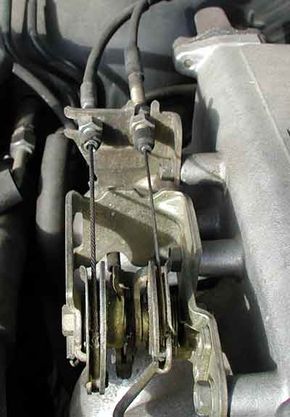
The cruise control system controls the speed of your car the same way you do -- by adjusting the throttle position . But cruise control actuates the throttle valve by a cable connected to an actuator , instead of by pressing a pedal. The throttle valve controls the power and speed of the engine by limiting how much air the engine takes in (see How Fuel Injection Systems Work for more details).
In the picture above, you can see two cables connected to a pivot that moves the throttle valve. One cable comes from the accelerator pedal, and one from the actuator. When the cruise control is engaged, the actuator moves the cable connected to the pivot, which adjusts the throttle; but it also pulls on the cable that is connected to the gas pedal -- this is why your pedal moves up and down when the cruise control is engaged.
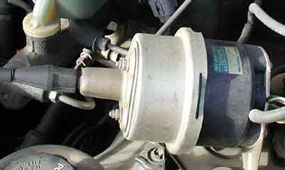
Many cars use actuators powered by engine vacuum to open and close the throttle. These systems use a small, electronically-controlled valve to regulate the vacuum in a diaphragm. This works in a similar way to the brake booster , which provides power to your brake system.
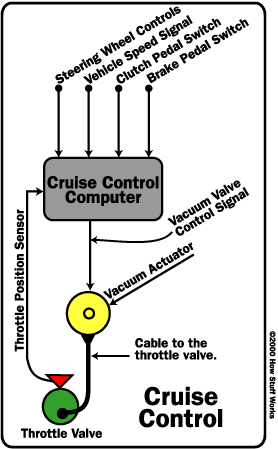
The brain of a cruise control system is a small computer that is normally found under the hood or behind the dashboard. It connects to the throttle control seen in the previous section, as well as several sensors. The diagram below shows the inputs and outputs of a typical cruise control system.
A good cruise control system accelerates aggressively to the desired speed without overshooting, and then maintains that speed with little deviation no matter how much weight is in the car, or how steep the hill you drive up. Controlling the speed of a car is a classic application of control system theory . The cruise control system controls the speed of the car by adjusting the throttle position, so it needs sensors to tell it the speed and throttle position. It also needs to monitor the controls so it can tell what the desired speed is and when to disengage.
The most important input is the speed signal; the cruise control system does a lot with this signal. First, let's start with one of the most basic control systems you could have -- a proportional control .
In a proportional control system, the cruise control adjusts the throttle proportional to the error, the error being the difference between the desired speed and the actual speed. So, if the cruise control is set at 60 mph and the car is going 50 mph, the throttle position will be open quite far. When the car is going 55 mph, the throttle position opening will be only half of what it was before. The result is that the closer the car gets to the desired speed, the slower it accelerates. Also, if you were on a steep enough hill, the car might not accelerate at all.
Most cruise control systems use a control scheme called proportional-integral-derivative control (a.k.a. PID control). Don't worry, you don't need to know any calculus to make it through this explanation -- just remember that:
- The integral of speed is distance.
- The derivative of speed is acceleration.
A PID control system uses these three factors -- proportional, integral and derivative, calculating each individually and adding them to get the throttle position.
We've already discussed the proportional factor. The integral factor is based on the time integral of the vehicle speed error . Translation: the difference between the distance your car actually traveled and the distance it would have traveled if it were going at the desired speed, calculated over a set period of time. This factor helps the car deal with hills, and also helps it settle into the correct speed and stay there. Let's say your car starts to go up a hill and slows down. The proportional control increases the throttle a little, but you may still slow down. After a little while, the integral control will start to increase the throttle, opening it more and more, because the longer the car maintains a speed slower than the desired speed, the larger the distance error gets.
Now let's add in the final factor, the derivative . Remember that the derivative of speed is acceleration. This factor helps the cruise control respond quickly to changes, such as hills. If the car starts to slow down, the cruise control can see this acceleration (slowing down and speeding up are both acceleration) before the speed can actually change much, and respond by increasing the throttle position.
Two companies are developing a more advanced cruise control that can automatically adjust a car's speed to maintain a safe following distance. This new technology, called adaptive cruise control , uses forward-looking radar , installed behind the grill of a vehicle, to detect the speed and distance of the vehicle ahead of it.
Adaptive cruise control is similar to conventional cruise control in that it maintains the vehicle's pre-set speed. However, unlike conventional cruise control, this new system can automatically adjust speed in order to maintain a proper distance between vehicles in the same lane. This is achieved through a radar headway sensor , digital signal processor and longitudinal controller . If the lead vehicle slows down, or if another object is detected, the system sends a signal to the engine or braking system to decelerate. Then, when the road is clear, the system will re-accelerate the vehicle back to the set speed.
The 77-GHz Autocruise radar system made by TRW has a forward-looking range of up to 492 feet (150 meters), and operates at vehicle speeds ranging from 18.6 miles per hour (30 kph) to 111 mph (180 kph). Delphi's 76-GHz system can also detect objects as far away as 492 feet, and operates at speeds as low as 20 mph (32 kph).
Adaptive cruise control is just a preview of the technology being developed by both companies. These systems are being enhanced to include collision warning capabilities that will warn drivers through visual and/or audio signals that a collision is imminent and that braking or evasive steering is needed.
For more information on cruise control, check out the links below.
Cruise Control FAQ
How does cruise control work, how does adaptive cruise control work, will adaptive cruise control stop the vehicle, when would you use cruise control, how useful is cruise control, lots more information, related articles.
- How Car Engines Work
- How Brakes Work
- How Manual Transmissions Work
- How Fuel Injection Systems Work
- How Radar Detectors Work
- Ignition System Quiz
More Great Links
- BMW: Cruise-control-equipped motorcycle
- Cruise Control Block Diagram
- Cruise Control Installers' Instructions
- Cruise Control Service Tips
Please copy/paste the following text to properly cite this HowStuffWorks.com article:
Enter your email below to receive occasional updates in your inbox.
- < Back to email setting
Cruise Control: What It Is and How to Use It
How to use cruise control.
The location of the cruise control buttons can vary per car. For your car, check the manufacturer’s manual for the location and specific instructions. To set cruise control, press the ON/OFF button or switch. If you press this button again, it typically turns the system off. The Res + (resume / increase seed) button increases the cruising speed by 1 mph, while the Set – (set speed / reduce speed) button decreases it by 1 mph. To shut off the cruise control, you can press the Cancel button or simply press the brake pedal. [1]
What is cruise control?
Cruise control locks your car’s accelerator at a specific speed, allowing you to take your foot off the pedal and remain at a constant speed. Because it’s so convenient for commuters and drivers who use the highway frequently, cruise control is a feature that generally comes standard on most models of cars. [2]
What is adaptive cruise control?
Adaptive cruise control is very similar to conventional cruise control, only it automatically adjusts the speed of your vehicle depending on how fast the vehicle in front of you is going. It may also reduce your speed around tight curves and adjust to speed limit changes, depending on your car’s technology. [3]
How to set cruise control
Follow these steps when setting the cruise control:
- Evaluate weather conditions: Check for hazardous weather conditions and any oncoming obstacles before applying cruise control.
- Build your speed: The ideal speed for cruise control is between 55 and 70 mph.
- Turn cruise control on: The button is usually on or near your steering wheel.
- Set cruise control: Press another button on your steering wheel and remove your foot from the accelerator.
- Watch the road carefully: You will have a slower reaction time if your foot is off of the brake or accelerator pedal. [1]
How does cruise control work?
Cruise control adjusts the throttle position in your car to control your speed. It does this by a cable connected to an actuator, instead of just by pressing the pedal to adjust the speed. [4]
Cruise control safety tips
Follow these safety tips while using cruise control on the road:
- Use it only on highways: Roads with lower speeds often have traffic lights, turns and other cars that require frequent stops.
- Don’t use it in heavy traffic: If you hit traffic and use the brakes a lot, cruise control isn’t ideal.
- Don’t use it on wet streets: Wet roads are dangerous, and it’s important to keep control of your car and its speed in those conditions.
- Keep your distance from other cars: A set speed could cause you to get dangerously close to other vehicles. Not every car as the distance-monitoring system that adjusts your car’s speed based on what’s in front of you.
- Hover your foot over the brake: Always be prepared to break whenever necessary.
- Be aware of your surroundings: Look out for other cars on the road and stay in your lane. [5]
Cruise control when it’s raining
Avoid using cruise control when the roads are wet . You might not be able to stop as quickly as you’d like when using cruise control. This could lead to dangerous situations and even accidents. Wet roads can affect your car’s ability to maintain a constant speed. There’s even a possibility if you’re using cruise control while it’s raining that your vehicle could hydroplane . [6]
Frequently asked questions about cruise control
Does cruise control save gas.
Cruise control can help you save an average of 7% to 14% on gas. When you don’t use cruise control and constantly press the accelerator and brake pedals, more gas is usually used. Cruise control works best to save gas when driving on flat roads that are free of congestion. [7]
Is cruise control bad for your card?
In general, cruise control isn’t bad for your car. It can actually reduce heavy acceleration and deceleration. It doesn’t damage your car in any way, and the frequent use of it doesn’t affect your vehicle. [8]
Is cruise control safe?
Cruise control is convenient for long stretches of driving and it can keep you from speeding if you set your speed to the correct limit. However, if the road conditions are rainy or snowy, cruise control can be dangerous. To use cruise control safely, it’s best to know when you should and shouldn’t use it. [9] Using cruise control on the highway makes your driving more predictable to other drivers. Instead of constantly changing speeds, cars know how fast you’re driving and can follow safely behind you or pass.
When should cruise control not be used?
You shouldn’t use cruise control in the following conditions:
- When the roads are wet and slippery.
- During heavy traffic.
- On hills and winding roads. [9]
[1] “What is cruise control?” kia.com/dm/discover-kia/ask/what-is-cruise-control.html (accessed July 11, 2023).
[2] “How to Use Cruise Control: 7 Specific Things You Need to Know Well,” driving-tests.org/beginner-drivers/how-to-use-cruise-control (accessed July 11, 2023).
[3] “What Is Adaptive Cruise Control? Is It Worth Paying For?” Stefan Ogbac, motortrend.com/features/adaptive-cruise-control (accessed June 2, 2020).
[4] “How Cruise Control Systems Work,” Karim Nice auto.howstuffworks.com/cruise-control.htm (accessed Feb. 9, 2021).
[5] “6 Cruise Control Safety Tips You Should Never Ignore,” Marisol Pereira and Carrie Adkins, getjerry.com/advice/6-cruise-control-safety-tips-you-should-never-ignore-by-marisol-pereira (accessed April 27, 2022).
[6] “How Does the Cruise Control in Cars Work?” mapfreinsurance.com/blog/how-does-cruise-control-in-cars-work (accessed July 11, 2023).
[7] “Does cruise control save gas?” kia.com/dm/discover-kia/ask/does-cruise-control-save-gas.html (accessed July 11, 2023).
[8] “Everything You Need to Know about Cruise Control,” Dave Johnston, mycarmakesnoise.com/electronics/cruise-control-guide (accessed July 11, 2023).
[9] “Is Cruise Control Safe to Use?” kaufmanlawatlanta.com/is-cruise-control-safe-to-use (accessed July 11, 2023).
Disclaimer:
The information included here is designed for informational purposes only. It is not legal, tax, financial or any other sort of advice, nor is it a substitute for such advice. The information may not apply to your specific situation. We have tried to make sure the information is accurate, but it could be outdated or even inaccurate in parts. It is the reader’s responsibility to comply with any applicable local, state or federal regulations. Nationwide Mutual Insurance Company, its affiliates and their employees make no warranties about the information nor guarantee of results, and they assume no liability in connection with the information provided. Nationwide and the Nationwide N and Eagle are service marks of Nationwide Mutual Insurance Company. © 2024 Nationwide
Related articles
12 reasons why your car won’t start.
It’s one of the worst things that can happen to a driver. You turn the key in your car’s ignition, perhaps hear a few alarming noises and then nothing. Whether...
Tire Rotation Overview: Why and When to Do It
Keeping your tires in good condition can be the difference between a safe ride and an accident. If your tires wear or get misaligned over time, this can lead to...
Why Are My Brakes Making Noise?
Have you ever been confused as to the sounds coming from your vehicle when you brake? From grinding and rattling to thumping and squealing, you can learn how to decode...
What is cruise control in a car? Meaning and how does it work?
Cruising on the highway can be a lot of fun. However, it demands maintaining a constant speed for a long time. To achieve that, you need to press the accelerator pedal continuously, which can get tiring after a while. That’s when the cruise control feature of your car comes into play. So, what exactly does it do and how does it work? This article explains cruise control in a car and how to use it in different driving conditions. So, without stepping on the ‘brake’ pedal, read on!

What is cruise control in a car?
It is a system that accurately maintains the speed set by the driver without any external intervention. It automatically controls the speed of a car and only allows the vehicle to hit a speed set by the driver. It does not allow the car to cross that speed limit. This feature has become common among modern cars. You can even find this feature in the top-spec variants of some of the affordable hatchbacks and sedans.
How does the cruise control system work?
Cruise control in a car replicates the inputs of a driver to control the vehicle’s speed. But instead of pressing the accelerator pedal, it uses a different mechanism to maintain a constant cruising speed.
Initially, the system used a cable to control the accelerator (throttle valve). You can find these mechanisms in older cars. It adjusted the vehicle's speed by engaging the throttle with the help of an actuator that is controlled by a cable. The throttle valve is responsible for the power and speed generated by the engine. So, depending on the speed set by the driver, the system automatically adjusted the throttle position.
But with the advent of technology in the automotive industry, the cruise control system in modern cars entirely relies on electronics. Instead of a cable, the system now communicates with the throttle via various sensors connected to a computer (ECU - Electronic Control Unit). So, when you set a speed, the ECU calculates the throttle position and engages the throttle wirelessly.
The system constantly maintains the speed set by you (driver) irrespective of road conditions. For example, if there’s an incline ahead, cruise control adjusts the throttle accordingly to maintain the same speed.
How to use cruise control?
Before engaging the cruise control in a car, remember that the system is not intended to be used in adverse weather conditions. For example, you may refrain from driving the car at cruising speeds when it’s raining heavily. The low visibility and unpredictable road conditions make it unsafe to drive at such speeds. So, always be mindful of the weather condition and your surroundings before engaging the system.
Here are the steps to use cruise control.
Step 1 - Before activating cruise control, build up speed by accelerating the car. However, do not cross the speed limit of that particular road/highway.
Step 2 - Once your car reaches the desired speed, activate cruise control. Generally, the system activation button will be on the steering wheel. However, locating the exact button when the vehicle is parked is better to avoid any distractions while driving.
Step 3 - Next, you can take your foot off the accelerator pedal. If you have set the cruise control correctly, the car should maintain the cruising speed.
Step 4 - Keep your eyes on the road as it is very easy to get distracted when the car is accelerating automatically.
Step 5 - If you wish to accelerate when the cruise control is engaged, you can press the ‘+’ button on the steering wheel to briefly engage the accelerator pedal.
Step 6 - To decelerate, press the ‘-’ button on the steering wheel. You can also tap on the brake pedal. However, as a safety precaution, almost all cars will deactivate the cruise control as soon as you press the brake pedal.
The buttons to activate cruise control or accelerate/decelerate may vary from one car to another. So, do check the owner’s manual before fiddling around with the system. It’s better if you are familiar with the controls before driving the vehicle, as it will avoid unnecessary distractions.
How to install cruise control in a car?
Can you install cruise control in a car? The answer is both yes and no. You may install an aftermarket kit if it’s an old car that does not rely on electronics to control all the engine-related functions. But installing such a kit becomes almost impossible in modern cars due to the complex electronics.
It is a complex process to install the system in new cars as you have to fiddle with electronics, and it also requires the fitment of hardware. So, it can only be done during the time of car manufacturing. Moreover, if you try installing an aftermarket kit, you may void the warranty offered by the OEM (Original Equipment Manufacturer). On top of that, it is not recommended to go for an aftermarket cruise control kit as it may compromise safety.
Newly launched cars are equipped with cruise control except for a few entry-level models. So, instead of investing in retrofitting a system, it's better and safer to spend that money on buying a car with a built-in system.
Adaptive cruise control
The new technology also allows the system to automatically adjust the car's speed depending on the speed of the vehicle ahead. This feature is known as adaptive cruise control. It ensures that the car maintains a safe distance from the vehicle ahead despite the constant change in speed of the vehicle moving ahead. It is instrumental in highways or during rush hour traffic and reduces driver fatigue.
It is also a level 1 autonomous driving system. The system uses radar sensors to calculate the speed and distance of the car ahead. For instance, if the vehicle in front of you slows down/speeds up, a car with adaptive cruise control will reduce speed/accelerate automatically without any external inputs.
You can find this feature in premium cars. But gradually, it is trickling down to not so expensive cars as well. Adaptive cruise control is a part of an advanced driver assistance system.
Pros and cons of cruise control
Cruise control makes driving easy and convenient, and at the same time, it also takes care of safety. But like every other feature, it has its own set of advantages and disadvantages, which are elaborated in the following section.
Below are some of the pros of the cruise control system.
Reduces driver fatigue: The primary role of cruise control is to maintain a constant speed without you having to step on the accelerator pedal. That means you can rest your right foot and can stay relaxed. It is helpful when you drive long distances on highways where you need to maintain a constant speed for long durations.
Improves fuel economy: When maintaining a constant speed, the engine will not get stressed as it need not change the intensity of operation. To put it in a simple way, when the engine runs at constant RPMs (Revolutions Per Minute) , it consumes less fuel. Hence, when driving long distances on highways, the cruise control system can improve fuel economy.
Helps to drive within the speed limit: You may drive at normal speed on busy urban roads. But when you hit the wide and smooth highways, you may end up crossing the speed limit. You may not even realise that you have crossed the speed limit until you glance at the speedometer. Cruise control can help you in this regard as you can easily set a speed limit and let the system do the work. The system will not allow the car to go over the speed set by you.
Increase/decrease speed with a click of a button: Typically, you use the accelerator and brake pedal to increase/decrease the speed of your car. But when the cruise control is engaged, you can even use the buttons to do the job for you. However, ensure that you are familiar with the functions of the buttons, as it may feel unnatural in the beginning. It is best to practice using the buttons in a safe environment before using them on public roads.
Works well with automatic cars: Cruise control works best with automatic cars as you need not worry about changing gears. The ECU or the onboard computer shifts the gears automatically when there is a change in speed and works well when cruising automatically. It means you only need to focus on steering the vehicle.
As mentioned earlier, cruise control also has some cons, which are listed below.
Limited use on Indian roads: Cruise control is suited for wide and long highways where drivers follow the rules. Although India has some excellent highways, many drivers may disregard rules which creates an unpredictable environment. Also, cattle, dogs and other animals may venture into public roads and make the situation even more tricky. Hence, it may be challenging to cruise at high-speeds.
Hampers reaction time: As mentioned above, the roads in India are unpredictable. You may have to perform emergency braking to avoid any obstacles on the road. When driving with manual controls, your right foot will be on the accelerator pedal, and it is easy to move your foot to step on the brake pedal in an emergency. But, when using cruise control, your right foot will be resting on the floor of the car, and it may take a bit more time to reach the brake pedal. This difference in reaction time may be the difference between you avoiding an obstacle or crashing into it.
Can induce drowsiness: If you use cruise control for long durations, you may end up feeling drowsy. Since the car is accelerating at a constant speed, your alertness level may drop in the long run. Hence, it is recommended that you manually control the vehicle once every 10-15 minutes when using the automatic cruising feature on highways.
Cannot use at night: Cruise control is of no use during night drives as the visibility is poor. Even with well-lit roads, the visibility is not as good as daylight. So, allowing the car to maintain a constant speed may be a safety concern, even on roads that are familiar to you.
It does not work well with manual cars: In a manual car, you have to change gears by yourself. The cruise control will handle the acceleration/deceleration, but you still need to shift the gears manually to maintain the optimum RPM. It can be irritating at times when you need to slow down and accelerate immediately. It may not be a dealbreaker, but it kind of refrains you from experiencing the full potential of the automatic cruising system.
Cruise control vs adaptive cruise control: Key differences
The below table highlights the key differences between cruise control and adaptive cruise control.
What is the difference between cruise control and speed limiter?
Sometimes you may get confused between cruise control and speed limiter as both are related to the car's speed. Refer to the table below to understand the difference between both the systems.
List of cruise control cars In India
Cruise control is a feature that we can see in a lot of cars. Gone are the days when this feature was limited to premium vehicles. Even vehicles with affordable price tags are equipped with intelligent features. Here’s the list of popular cars with the automatic cruising system.
List of adaptive cruise control cars in India
Adaptive cruise control is the more advanced version of the standard automatic cruising system. Currently, this system can be seen only in premium cars in India. Below is the list of popular cars with adaptive cruise control.
Frequently asked questions
Here are some of the most commonly asked questions related to cruise control in cars.
No, it is not a standard feature in cars. However, almost all vehicles costing above Rs. 5 lakhs are equipped with cruise control.
It is not advisable to install an aftermarket cruise control kit in your car as new vehicles have complex electronics. Moreover, installing such a kit involves a complicated process, and it may also void the warranty provided by the car manufacturer.
Typically, the cruise control button is located on the steering wheel for easy access. However, the location of the button may vary depending on the make and model.
Yes, you can use cruise control in a manual car. However, you need to manually control the gear shifts when the vehicle slows down or accelerates when the system is engaged.
What are Roof Rails and How are They Useful?
Team Ackodrive May 9, 2024
What is Keyless Entry in Cars?
Team AckoDrive May 8, 2024
Engine Immobiliser in Cars: A Detailed Guide to Enhanced Vehicle Security
What is a Rear Spoiler in Cars?
Team AckoDrive Apr 30, 2024
What is Electronic Brakeforce Distribution
All Articles

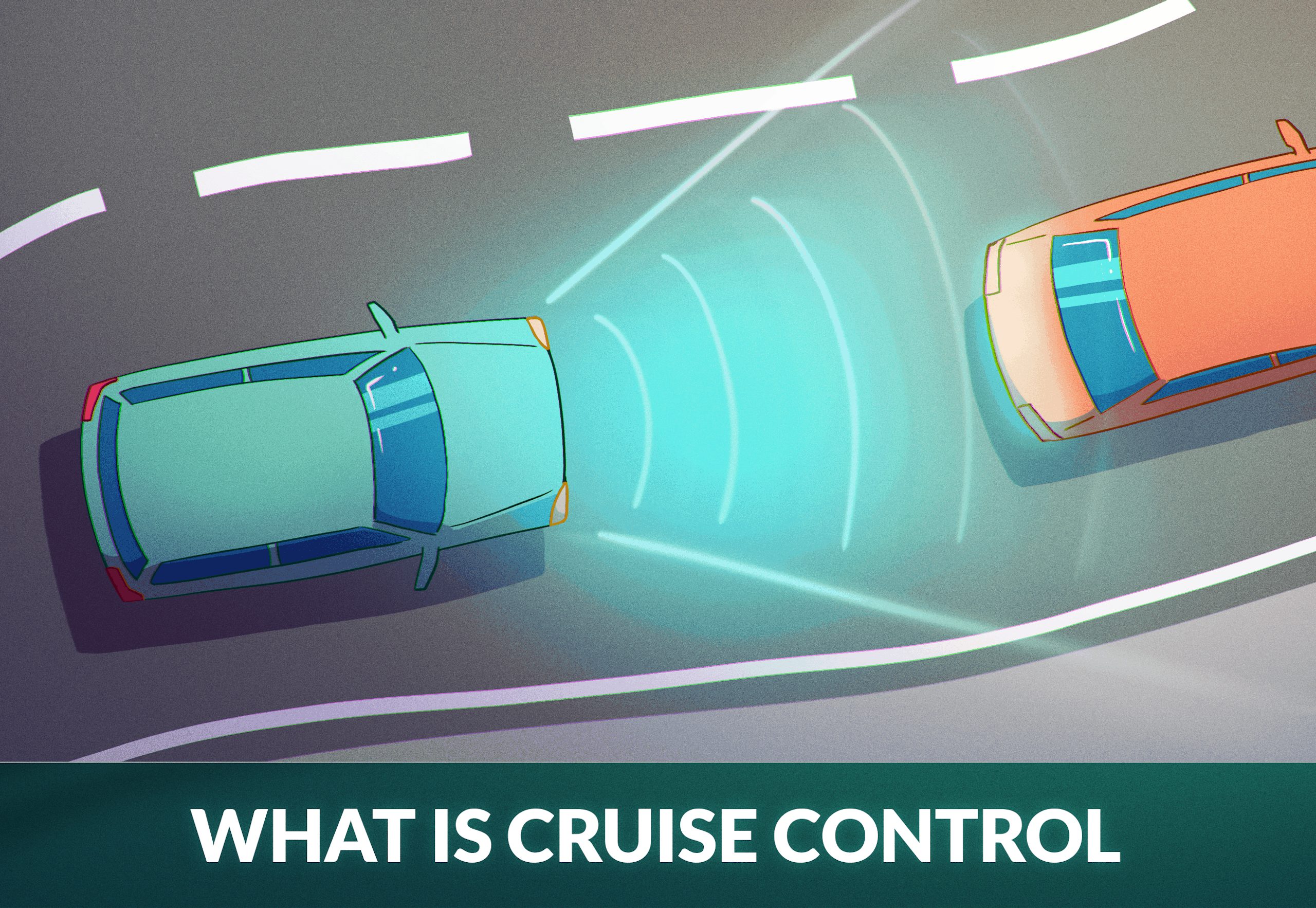
Cruise Control Explained – All You Need to Know
Cruise control has come a long way since first invented and patented by Ralph Teetor in 1950, who originally named it the “Speedostat”. Chrysler Corporation was the first manufacturer to offer the groundbreaking mechanism as an option on several of its luxury vehicle models nine years later. Today, cruise control is rapidly becoming the standard on all new vehicles, providing drivers with increased convenience on their daily drive.
As you’re learning how to operate a vehicle , understanding cruise control will help increase your comfort behind the wheel and knowledge of driving.
What is Cruise Control?
Cruise control is an electronic device within your vehicle that controls the speed of your vehicle. It allows the driver to maintain a constant speed of 25 mph without holding their foot on the accelerator. Although the feature has been around for 70 years, automotive manufacturers continue to improve upon the technology to provide drivers with increased comfort, luxury, and convenience whenever they’re behind the wheel.
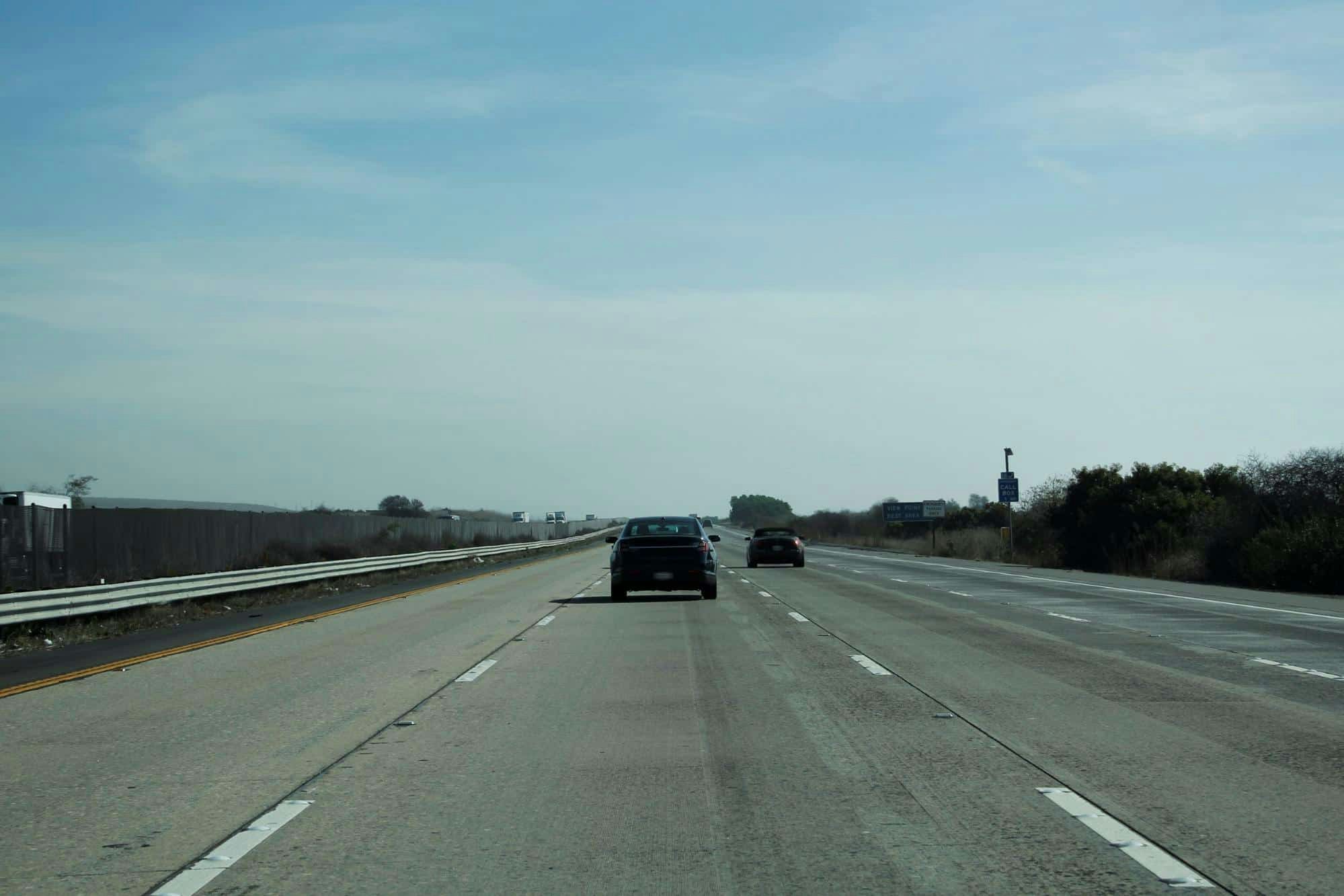
Different Types of Cruise Control
There are 3 types of cruise control systems.
- Speed Limiter
- Adaptive Cruise Control
- Semi-autonomous Cruise Control
What is a Speed Limiter?
A speed limiter will limit how fast the driver can accelerate behind the wheel. All modern vehicles contain a standard speed limiter capping speed between 120 mph and 180 mph depending to protect the vehicle’s engine and discourage reckless driving. However, an additional limiter can be added as an option in many European-made cars, as well as Tesla, Ford, and Nissan. Drivers are still required to keep their foot on the pedal to keep their vehicle in motion, but will not be able to accelerate past a predefined speed limit.
What is Adaptive Cruise Control?
Adaptive cruise c ontrol uses sensors around the vehicle’s exterior to maintain speed while keeping a safe following distance from the car ahead. The system will slow you down and speed you up as the flow of traffic fluctuates throughout your commute, removing a lot of the stress from daily driving. However, adaptive cruise control may not work well in bad weather or protect you from sudden movements, so you will want to always keep your full attention on the road.
What is Semi-autonomous Cruise Control?
Luxury automakers such as Tesla and Audi are implementing the newest rendition of cruise control on their latest vehicle models – Semi-autonomous Cruise Control. It works largely the same as adaptive cruise control, but assists drivers with lane guidance and steering. There are several variations of semi-autonomous cruise control that include additional convenience features for the driver.
How to Use Cruise Control – 6 Step Guide
These are the steps to using cruise control effectively.
- Observe weather conditions
- Build speed
- Engage cruise control
- Set cruise control
- Watch the road and steer
- Brake to disengage
1 – Observe weather conditions
As mentioned, cruise control may become inconsistent in rainy, snowy, or otherwise hazardous conditions. If you must drive in this situation, it may be a better idea to do so manually. Cruise control works best on a clear day with constant traffic flow.

2 – Build speed
Accelerate to your desired speed as you prepare to activate cruise control. US highways have posted speed limits between 55 mph and 75 mph. Do not attempt to set cruise control when you are traveling over the speed limit.
3 – Engage cruise control
Once you’ve reached your desired speed, engage the cruise control. This step will vary widely based on your vehicle make and model, however, many cruise control settings are accessible from the steering wheel controls. Check your owner’s manual for further information.
4 – Set cruise control
After turning on cruise control, you’ll need to set your desired speed. Many systems set the cruise control at the current speed, while others require you to manually set one. You can increase and decrease this speed as needed without interrupting the mechanism.
5 – Watch the road and steer
Watching the road is essential when cruise control is engaged. Cruise control is not a substitute for a human driver and will require supervision at every step. If you are using a semi-autonomous system, you will not need to steer but will need to keep at least one hand on the wheel for safety measures.
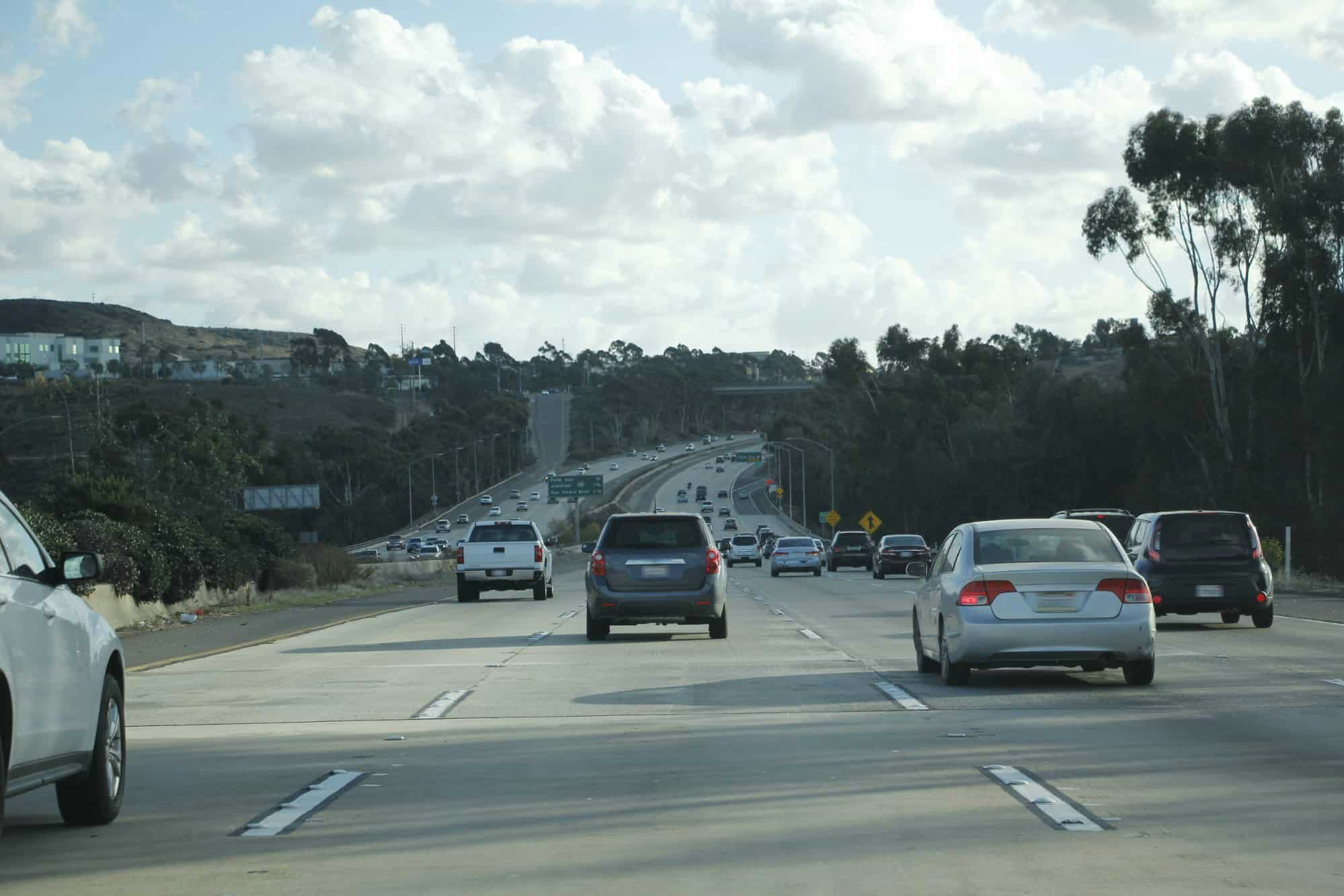
6 – Brake to disengage
When cruise control is no longer needed, or you need to quickly make a maneuver, simply apply pressure to the brakes to disengage the system. Once deactivated, you will be in full control of your vehicle once again.
When NOT to Use Cruise Control
While cruise control is a convenient feature for modern drivers, it is not perfect for all circumstances. In fact, utilizing the system can be quite dangerous if you’re not careful. Be sure not to use cruise control under these conditions.
Heavy Traffic
Heavy, or stop-and-go traffic is not ideal for safely using cruise control. When engaging cruise control on the highway, ensure your lane is clear and there are no vehicles stopping ahead.
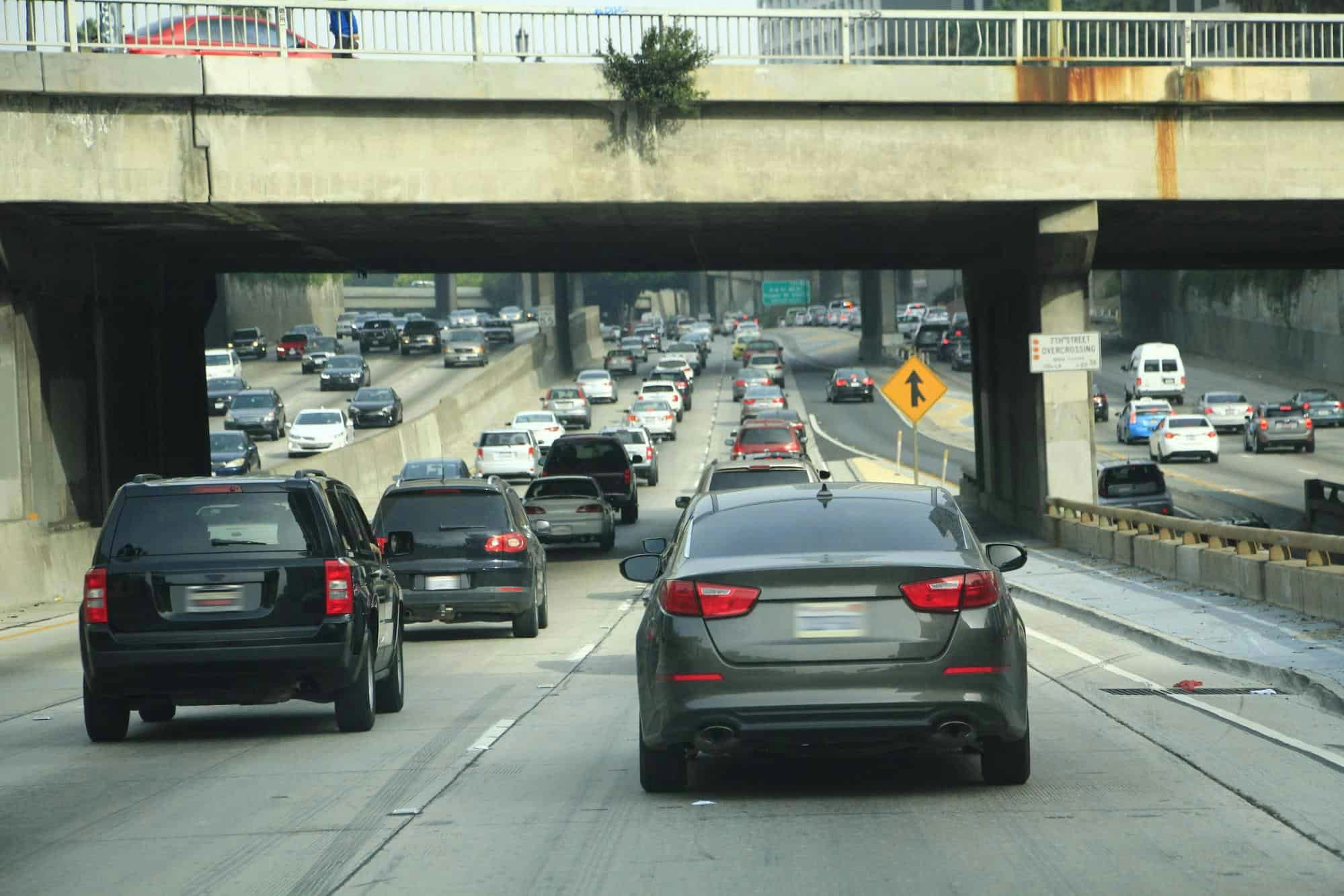
Wet or Icy Conditions
You need to be driving slowly while on wet and icy roads. While cruise control keeps a constant, predetermined speed, it takes away a lot of the manual control needed to stay safe when it’s raining or snowing.
City Driving
While driving through the city, you’ll face a number of stop lights and stop signs that will require manual braking. This action will automatically disengage cruise control.
Winding Roads
Winding roads require more attention than straight, flat streets. Cruise control systems, even adaptable cruise control, may not always detect these streets correctly, causing accidents.
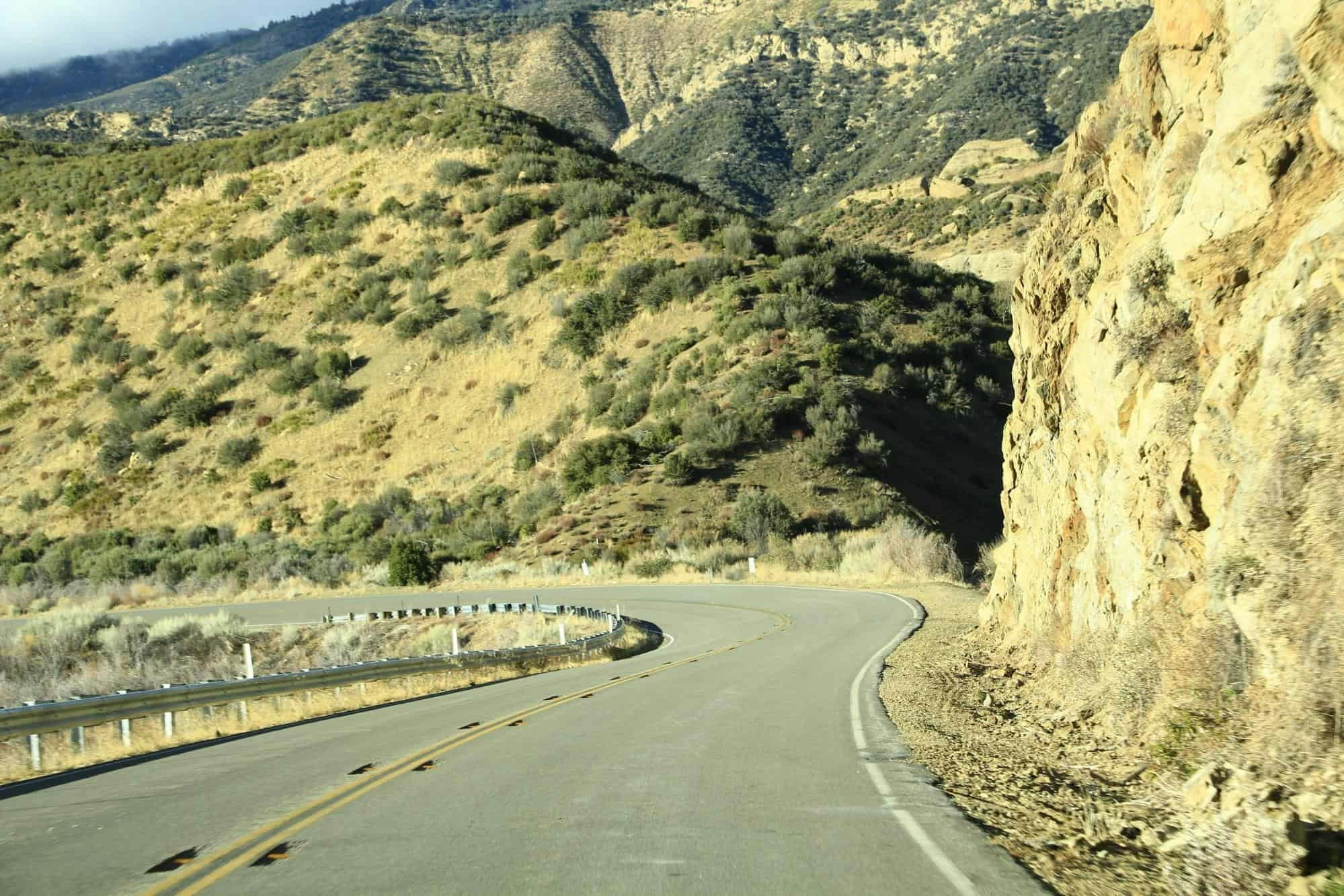
Fatigued Driving
Driving while fatigued is never a good idea, but even less so while using cruise control. Utilizing the system may add to your fatigue, as you give your vehicle more control of the journey. If you’re even the least bit tired, you should never turn on cruise control.
As you can see, cruise control is a great way to relieve much of the stress that comes with everyday driving. The constant rate of speed can also drastically improve fuel efficiency for longer drivers. Cruise control has had a positive impact on the driving industry for 70 years and shows no signs of disappearing anytime soon.

550+ exam-like questions
All you need to ace your test
Perfect for first-timers, renewals and senior citizens
Recommended articles
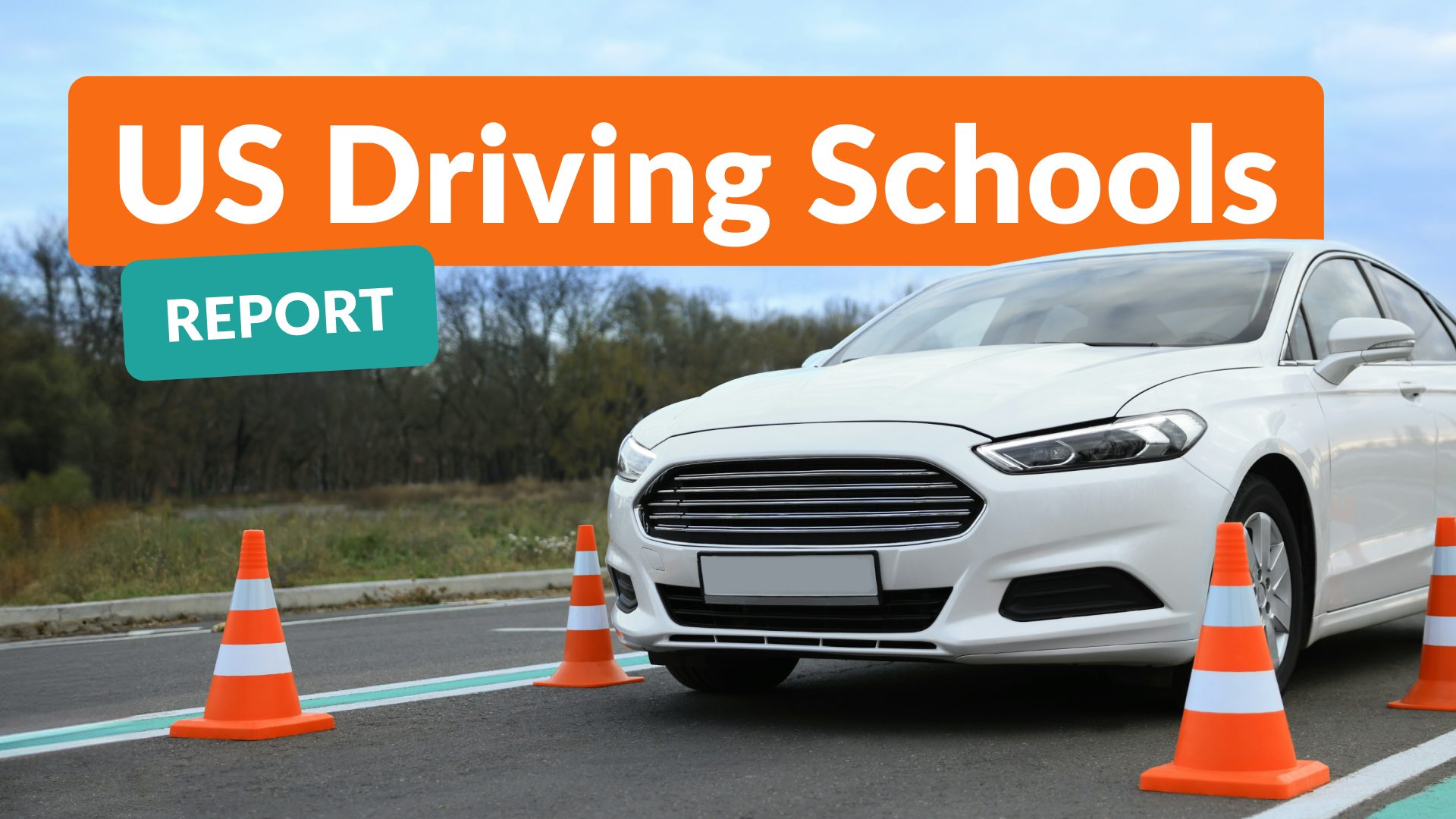
Driving School Costs Report – The Cheapest and Most Expensive States
For many, the ability to drive is not just about mobility—it’s a rite of passage that symbolizes freedom and the thrill of charting one’s own course. the anticipation of sitting behind the wheel for the first time is a universal dream, yet for many aspiring drivers in the united states, this dream comes with variable […].
Distracted Driving Report – The States With the Least and Most Distracted Driving
In april 2024, the national highway traffic safety administration (nhtsa) released data for 2022 that illustrated traffic deaths due to distracted driving increased by 12 percent from 2020 but decreased compared to 2021 to 6%. every year, thousands of drivers and passengers are fatally injured as a result of distracted driving. in 2022, roughly 2,109 […].
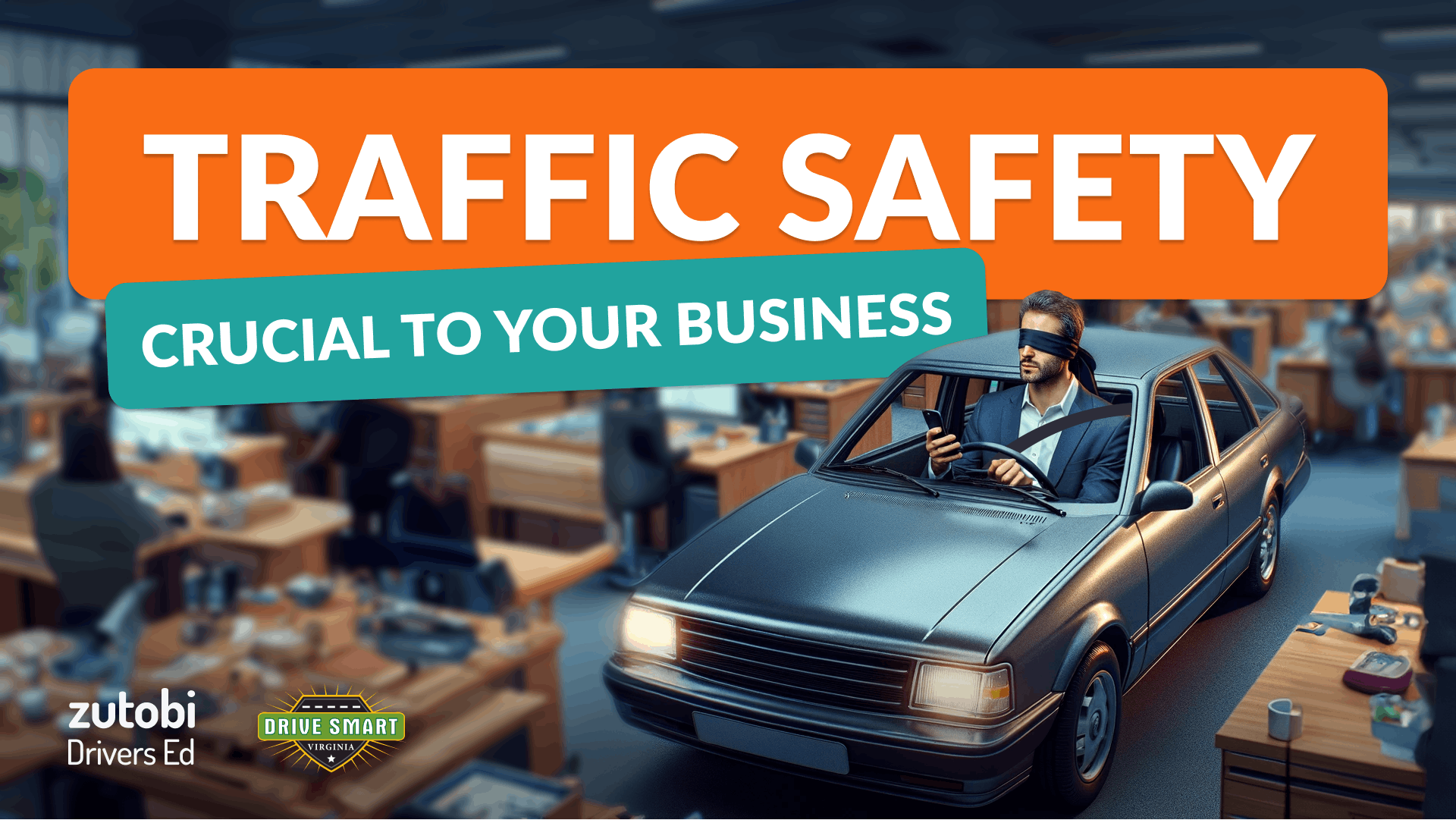
Traffic Safety is Crucial to Your Business
By kristin pettway, drive smart virginia april is distracted driving awareness month and the perfect opportunity for workplaces to review their traffic safety policies and communications. traffic crashes are the leading cause of workplace deaths in america. even if you don’t have a fleet of vehicles, safe driving should still matter to your business. after […].
Ace your DMV test, guaranteed
Get started
Best of the Zutobi blog
- Learner’s Permit Ultimate Guide
- Driving Test Ultimate Guide
- Traffic Lights Guide
- How to Pass the DMV Permit Test
- How to Pass the Driving Test
- Common Reasons For Failing the Road Test
- International Driver’s Permit Guide
- Driver’s License Renewal
- How to Get Your US Driver’s License
- How to Prepare for Your Road Test
- How to Get a Driver’s Permit
- Behind-The-Wheel training
- Terms & conditions
- Privacy policy
- Do Not Sell My Personal Information
- Subscription terms
- Terms & policies
Practice Tests
- Car Practice Tests
- CDL Practice Tests
- Motorcycle Practice Tests
- PRO Courses Guides New Tech Help Pro Expert Videos About wikiHow Pro Upgrade Sign In
- EDIT Edit this Article
- EXPLORE Tech Help Pro About Us Random Article Quizzes Request a New Article Community Dashboard This Or That Game Popular Categories Arts and Entertainment Artwork Books Movies Computers and Electronics Computers Phone Skills Technology Hacks Health Men's Health Mental Health Women's Health Relationships Dating Love Relationship Issues Hobbies and Crafts Crafts Drawing Games Education & Communication Communication Skills Personal Development Studying Personal Care and Style Fashion Hair Care Personal Hygiene Youth Personal Care School Stuff Dating All Categories Arts and Entertainment Finance and Business Home and Garden Relationship Quizzes Cars & Other Vehicles Food and Entertaining Personal Care and Style Sports and Fitness Computers and Electronics Health Pets and Animals Travel Education & Communication Hobbies and Crafts Philosophy and Religion Work World Family Life Holidays and Traditions Relationships Youth
- Browse Articles
- Learn Something New
- Quizzes Hot
- This Or That Game
- Train Your Brain
- Explore More
- Support wikiHow
- About wikiHow
- Log in / Sign up
- Cars & Other Vehicles
- Driving Vehicles
- Efficient Driving
How to Use Cruise Control on a Car
Last Updated: February 20, 2024 Fact Checked
This article was co-authored by Simon Miyerov . Simon Miyerov is the President and Driving Instructor for Drive Rite Academy, a driving academy based out of New York City. Simon has over 8 years of driving instruction experience. His mission is to ensure the safety of everyday drivers and continue to make New York a safer and efficient driving environment. This article has been fact-checked, ensuring the accuracy of any cited facts and confirming the authority of its sources. This article has been viewed 483,166 times.
Many cars come with cruise control systems, a great feature that will automatically keep a car driving at a set speed. This gives your feet a rest, and helps you save gas and avoid speeding tickets. Familiarize yourself with your car's cruise control switches, located on or near the steering wheel. Make sure to use cruise control only in safe conditions, and to stay focused on the road. Once you know how to operate cruise control, you're ready for a comfortable, efficient drive!
Get Car Support Solve Any Problem
We’re sorry we don’t support the car you are looking for. Please enter its make, model, and year below so that we can add support for it.
Operating Cruise Control

- Check your car's operating manual if you are unable to find the cruise control switches.

- Many cars have additional buttons to increase or decrease speed (marked by a +/-) when using cruise control.

- For some car models, cruise control will not operate below a certain speed, such as 40 miles (64 km) per hour.

- To stop cruise control briefly (such as when a car in front of you brakes), just press the brake as you normally would.
- If you are driving a manual, you can also disengage cruise control by pressing the clutch.
- If you are completely done using cruise control, you can press the “OFF” or "ON/OFF" switch.
- If your car has a cruise control “CANCEL” switch, you can also press that to stop it.

- If your car has a +/- button for cruise control, press this when you want to raise or lower your car's speed.
Using Cruise Control Safely and Efficiently

- Using cruise control on busy streets can also be dangerous. Since you yourself are not in complete control of your car, you may be paying less attention. You might brake or react to other cars more slowly than normal, increasing the chance of an accident.

- Wet or snowy roads
- Hilly, steep, or mountainous areas
- Winding roads

Expert Q&A

You Might Also Like

- ↑ Simon Miyerov. Driving Instructor. Expert Interview. 4 December 2019.
- ↑ https://www.youtube.com/watch?v=jKtBSFoAYlg
- ↑ http://www.thecarexpert.co.uk/cruise-control/
About This Article

If you want to use cruise control on your car, make sure you're on the open road, such as a freeway or highway. Additionally, avoid using cruise control in rainy or snowy conditions, or if you're driving through a city, since you'll need to change speed and turn regularly. When you're ready to switch to cruise control, press the "Set" switch, which is usually found on the steering column or on the wheel, when your car reaches the desired speed. To stop cruise control, press on the brake or push the clutch if you're driving a manual car. To learn when to avoid using cruise control and how it can help you save on fuel, read on! Did this summary help you? Yes No
- Send fan mail to authors
Reader Success Stories
Joseph Adizero
Dec 17, 2020
Did this article help you?

Suraj Sinha
Jun 17, 2016
Ashish Vohra
Oct 17, 2017
Jul 26, 2017
Alejandro Martinez
Jul 25, 2016

Featured Articles

Trending Articles

Watch Articles

- Terms of Use
- Privacy Policy
- Do Not Sell or Share My Info
- Not Selling Info
Get all the best how-tos!
Sign up for wikiHow's weekly email newsletter
Cruise Control In Cars Explained (And How To Safely Use It)

Have you ever wished you could set your car's speed and just sit back and relax while driving on a long stretch of highway? If that's the case, then cruise control is just the ticket you've been searching for—and the good news is, it's a standard feature in most cars these days!
Cruise control is a handy feature for drivers that allows you to maintain a constant speed without having to keep your foot on the gas pedal. In this post, we'll explore how cruise control works, its benefits, and how to use it safely to make your driving experience more comfortable.
Understanding Cruise Control
Cruise control, also known as speed control, is an electronic system that allows you to maintain a specific speed without manually controlling the accelerator pedal. The system uses sensors and electronic components to control the throttle and keep your car moving at a desired speed. First introduced in the late 1950s, cruise control has since become a standard feature in most modern vehicles you see on the road today.
How Does It Work?
At its core, cruise control involves a series of sensors that monitor the vehicle's speed and a control unit that regulates the throttle. When the driver sets the cruise control to a specific speed, the system adjusts the throttle to maintain that speed. If the car begins to slow down because of an incline (e.g. going up a hill), the system will open the throttle to accelerate. Conversely, if the car starts to speed up due to a declin (e.g. going downhill), the system will close the throttle to decelerate.
Modern cruise control systems also come with additional features like adaptive cruise control (ACC), which uses radar or cameras to detect vehicles ahead and automatically adjusts the speed to maintain a safe following distance (more on this BELOW).
The History of Cruise Control
The invention of cruise control can be traced back to the late 1940s and early 1950s, when engineer Ralph Teetor developed the first-speed control system. This innovative feature was designed to help drivers maintain a steady speed, reduce fatigue while driving, and improve fuel efficiency. Over the years, cruise control technology has undergone significant advancements, leading to the development of sophisticated systems like adaptive cruise control.
Types of Cruise Control Systems
Today, drivers can choose from a range of cruise control systems, each with its own unique features and functionalities.
Conventional Cruise Control
Conventional cruise control is like your old reliable friend. It's pretty basic and doesn't have any fancy bells and whistles. You just set the speed you want, and it'll keep your car cruising along at that speed, no problem. It's perfect for those long drives on open highways, but it doesn’t automatically react to other cars on the road.
So, if the car in front of you slows down, you'll need to step in and adjust your speed manually. This trusty system comes standard on most cars and is great for saving some fuel on those long road trips .
Adaptive Cruise Control (ACC)
Now, if conventional cruise control is your old reliable friend, then Adaptive Cruise Control (ACC) is like that friend's tech-savvy younger cousin. ACC isn't just maintaining your set speed, it's also keeping an eye on the car in front of you. If that car slows down, ACC slows your car down to keep a safe distance .
It's like having an extra set of eyes on the road, making highway driving a breeze. Plus, some ACC systems can even handle stop-and-go traffic, bringing your car to a full stop and then picking up speed again when traffic gets moving.
Predictive Cruise Control
Predictive Cruise Control is like the fortune teller of cruise control systems. It uses GPS and map data to see into the future and predict what's coming up on the road, like hills or curves, and adjusts your speed accordingly. This means you get a smoother ride and better fuel efficiency, but it all depends on the quality of the GPS and map data. If that's a bit out of date, your fortune-telling cruise control might not be so accurate. It's usually found in more high-end vehicles where top-notch fuel efficiency is a focus for the engineers.
Cooperative Adaptive Cruise Control (CACC)
And then we have Cooperative Adaptive Cruise Control, or CACC. This is like the team player of cruise control systems. It allows cars to talk to each other, coordinating their speeds to maintain a safe distance. It's like having a well-coordinated team of cars all working together to make the traffic flow smoother and reduce congestion. Picture it like a synchronized dance on the highway, where every car knows its place and keeps the right distance. This tech is still pretty new, but it's got a lot of potential. Imagine a future where traffic jams could be a thing of the past.
Remember, these systems are here to make your drive smoother and safer, but they're not a replacement for your attention. No matter how fancy your cruise control is, these systems can be greatly influenced by external conditions like weather and traffic, and they should always be used as aids, not replacements, for attentive driving.
Common Cruise Control Symbols and Indicators
Understanding the various symbols and indicators associated with cruise control is important for safe and effective usage. These symbols typically appear on the dashboard (or on the side of the steering wheel) and may include a speedometer icon, "SET," "RES" (resume), and "CANCEL". Be sure to consult your vehicle's owner's manual for specific details and explanations of these symbols.
Benefits of Using Cruise Control
Cruise control offers several benefits to drivers, especially during long road trips or highway driving.
Fuel Efficiency
One of the main advantages of using cruise control is improved fuel efficiency. By maintaining a constant speed, cruise control helps reduce fuel consumption, leading to better gas mileage. Rapid acceleration and deceleration, on the other hand, can lead to increased fuel consumption.
Comfort and Convenience
Cruise control allows drivers to take their foot off the accelerator pedal, reducing fatigue and improving comfort during long drives. It also helps drivers avoid unintentionally exceeding the speed limit by setting a maximum speed.
When used correctly, cruise control can contribute to safer driving. By maintaining a steady speed, it reduces the likelihood of erratic driving behavior and potential accidents. However, it is important to note that cruise control shouldn't be used in certain conditions, such as heavy traffic or slippery roads .
Troubleshooting Common Cruise Control Issues
Occasionally, you may encounter issues with your cruise control systems. Common problems include cruise control not engaging or disengaging unexpectedly. Possible causes may include a faulty brake light switch, malfunctioning sensors, or issues with the control module. If you experience any problems with your cruise control, it's best to have a qualified technician diagnose and repair the issue for you.
Cruise Control and Road Etiquette
Practicing proper road etiquette while using cruise control is essential for a safe and pleasant driving experience. Here are some tips on how to use cruise control courteously:
- Avoid using cruise control in heavy or congested traffic, as it may hinder your ability to react quickly to changing conditions.
- Be mindful of other drivers when setting your speed. Avoid setting a speed that's significantly slower or faster than the flow of traffic.
- If you are in the passing lane and using cruise control, be sure to adjust your speed or temporarily disengage the system to allow faster-moving vehicles to pass.
- Always signal your intentions, such as lane changes or exiting the highway, even when using cruise control.
The Future of Cruise Control Technology
Cruise control technology plays a vital role in the development of autonomous vehicles, or self-driving cars . In autonomous vehicles, cruise control systems work together with other advanced driver assistance systems (ADAS) to enable the vehicle to operate without direct driver input. These systems include lane-keeping assist, automatic emergency braking, and collision avoidance systems.
As autonomous vehicles become more sophisticated, cruise control technology is evolving to support higher levels of automation. For example, some autonomous vehicles are equipped with advanced cruise control systems that can navigate complex traffic scenarios, merge onto highways, and even change lanes autonomously.
While fully autonomous vehicles are still in the developmental stages, the integration of cruise control technology is a big step toward creating safer and more efficient transportation systems.
As automotive tech continues to advance, cruise control systems are becoming more intelligent and capable. Here are some potential developments we can expect to see in the future of cruise control technology:
- Integration of artificial intelligence (AI) to improve decision-making and responsiveness in adaptive cruise control systems.
- Enhanced connectivity and vehicle-to-vehicle (V2V) communication, enabling cars to share information about traffic conditions and coordinate their speeds for smoother traffic flow.
- Greater customization and personalization options, allowing drivers to set preferences for cruise control behavior, such as following distance and speed adjustments.
Overall, the future of cruise control technology holds promise for creating a more seamless and enjoyable driving experience, with a focus on safety, comfort, and sustainability.
Debunking Myths About Cruise Control
Let's address and debunk some common misconceptions about cruise control:
Myth : Cruise control can be used as a substitute for driver attention.
Fact : Cruise control is a driver assistance feature, not a replacement for attentive driving. Drivers should always remain alert and ready to take control when necessary.
Myth : Cruise control increases the risk of accidents.
Fact : When used appropriately, cruise control can contribute to safer driving by maintaining a steady speed and reducing erratic driving behavior.
Cruise control is a valuable feature that can enhance your driving experience by providing comfort, convenience, and fuel efficiency. Remember to use it safely and appropriately based on driving conditions, and always stay attentive while on the road.
If you found this post informative and want to learn more about car features, driving tips, and automotive technology, be sure to subscribe to our newsletter for regular updates. We're here to help you stay informed and enhance your driving experience.
Frequently Asked Questions About Cruise Control
To further enhance your understanding of cruise control, here are answers to some common questions:
Q : Can cruise control be used in all weather conditions?
A : It isn't advisable to use cruise control in adverse weather conditions, such as heavy rain, snow, or icy roads, as it may reduce your ability to respond quickly to changing road conditions.
Q : Can I use cruise control in urban areas with frequent stop-and-go traffic?
A : Cruise control is best suited for open roads and highways with consistent traffic flow. It isn't recommended for use in urban areas with frequent stops or heavy traffic.
Q : Does cruise control work at any speed?
A : Cruise control typically has a minimum speed threshold, below which it can't be engaged. This threshold varies by vehicle, so check your owner's manual for specific information.
About the Author: This article was crafted by the LOOP Marketing Team. Comprising of seasoned professionals with expertise in the insurance industry, our team is dedicated to providing readers with accurate, up-to-date, and valuable information. At LOOP, we're passionate about helping families navigate the world of car insurance, ensuring they get the best coverage at the most affordable rates. Learn more about our mission and values here.
For more insights on auto insurance and other related topics, visit our blog .
Quick Navigation
Check out how much you could save today.
Browse related articles

What To Know About Speed Limits

When Should You Trade In Your Car?

Busting Common Driving Myths: Fact Vs Fiction On The Road
Life has many roads. your weekly navigator is just a click away..
Cruise Control Explained: How It Works, And When You Should Use It
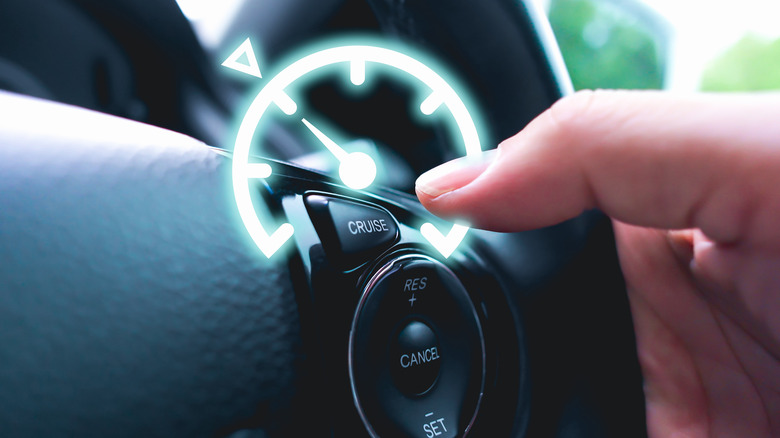
Self-driving cars are becoming increasingly intelligent , but whether they'll ever be ubiquitous and fully capable remains unclear. Tesla notes (for now) that its Full Self Driving Capability is "intended for use with a fully attentive driver, who has their hands on the wheel and is prepared to take over at any moment." For many drivers at present, the automatic functions of their cars are limited to the likes of beeping sensors, flashing displays, and features like cruise control.
Cruise control is a feature provided as standard on a wide range of vehicles; it's one of those functions that some drivers adore and others barely use. While the feature doesn't take over from the driver by any means, it can significantly ease their burden. Essentially, cruise control allows drivers to select an appropriate speed for the road, conditions, and general journey they're currently on, and automatically prevents the vehicle from deviating from that speed.
Experienced drivers, of course, will probably be familiar with the basics of what cruise control does, even if they haven't really used it themselves. Rather more complex than that, though, is the question of exactly how it keeps the vehicle moving at a specific speed. If you've ever wondered how cruise control works, what the pros and cons of using it are, how it's developed since its introduction, and/or when to use it, this is just the piece for you.
The essentials of how cruise control works
Cruise control as we know it today has its roots in the ingenuity of Ralph Teetor. Though he lost his vision following an accident, Teetor rose to become the president of the Society of Automotive Engineers. In that capacity, he used both his passion for auto safety and his extensive experience with other drivers to create the first example of cruise control. In 1950, Teetor held a patent for technology referred to as a "Speed Control Device For Resisting Operation Of The Accelerator," also called the Speedostat, and it worked just as the name implied: the driver could opt for a certain speed by selecting it from the dash, then, through the drive shaft, a piston would provide resisting force on the pedal after arriving at that speed.
The basics of how cruise control functions haven't actually changed very much. Depending on the vehicle model, the input for choosing the desired speed may now be a touchscreen, but the effect is the same: a connected actuator receives the signal from the control device, and, as it runs to the valve for the throttle, is used to control the strength of the force acting on the throttle. Accelerating faster or slower depending on how much faster the inputted speed is, the vehicle will then reach said speed and hold the accelerator in place (though not necessarily physically as Teetor's Speedostat did). This is a mechanically-oriented form of cruise control, but some modern vehicles utilize adaptive cruise control instead.
How is adaptive cruise control different?
The basic concept of cruise control, of course, is centered more around what the specific vehicle is doing, rather than what's on the road around it. Drivers can simply brake as they typically would in response to other drivers, overriding the constant-speed effect of cruise control, which means that autonomy isn't really a factor in cruise control beyond maintaining the speed. Adaptive cruise control like the kind found in some Acura vehicles , however, is a little more sophisticated.
Adaptive cruise control is a feature more able to do exactly that: adapt. This means that while the driver selects the vehicle's cruising speed as before, it is not locked to that speed. Another crucial thing to take into account is the vehicle's distance from others; adaptive or autonomous cruise control adds small and discreet radar systems (inputs situated somewhere near the vehicle's front lights) to the equation to monitor the surrounding area. These radars have ranges from approximately 100 feet to around 600 feet, depending on the vehicle.
A car with ACC will commonly boast small wheel-mounted units that measure its speed, along with a front-mounted one that can determine how far away other vehicles are. The former can adjust how fast your vehicle is moving relative to any motorists ahead, thereby ensuring that you always maintain your selected distance from them. Braking capacity while the system is active differs, but typically, the driver will be alerted to brake heavily if necessary (if a driver ahead does the same for instance).
When cruise control should be used
Some drivers often have the luxury of wide, peaceful, near-empty roads. For others, driving tends to be a commuter's cacophony of traffic jams, honking horns, and slow stop-start-stop-start progress. The experience can differ greatly depending on the time of day and whether it's a weekday or the weekend. The bottom line, though, is that one of these scenarios is a far better fit for cruise control than the other.
Brakes remain operational during the use of cruise control, and engaging them will override the system. This means two things: the driver's attention must still firmly remain on the road as ever (we're not at level 5 on the autonomous driving scale here) and cruise control has sharply decreased utility in congested areas. By contrast, if you're a driver who frequently takes long-distance trips on open roads, cruise control could be the perfect feature for you. An alert and rested driver is a safe driver, and where longer journeys can compromise those things, cruise control reduces some of that pressure.
Adaptive cruise control, which monitors the ever-changing road ahead continuously via radar or laser, is potentially better equipped to handle congested roads. There's no definitive answer on whether that's the case, however, because this feature is very different from vehicle to vehicle.
Different manufacturers have different cruise control features
Cruise control is a common feature, and adaptive cruise control is becoming increasingly widespread too. The matter of how the two types of cruise control work is a very complex one beyond the basics, though, because different vehicle manufacturers have developed their own unique features for it and implemented the system in different ways.
For example, Audi's Traffic Jam Assist technology can be activated in tandem with its adaptive cruise control, thereby supporting the driver in conditions that aren't optimal for the latter. By means of ultrasonic sensors, radar, and a windshield camera, the vehicle will maintain a consistent distance from the one ahead in traffic while staying oriented on the road. The driver takes full manual controlwhen the congestion clears or Traffic Jam Assist otherwise becomes unsuitable for the situation.
Similarly, select Ford models are among those that offer Intelligent Adaptive Cruise Control, implementing advanced features such as Speed Sign Recognition (which aims to prevent adaptive cruise control users from being caught out by speed limits by adjusting the chosen speed to match them) and Stop-and-Go (limited capacity to stop entirely in response to a vehicle ahead doing the same). As always, drivers should consult their vehicle manual to determine which cruise control features are available and how to use them.
Pros and cons of cruise control and adaptive cruise control
Cruise control can be advantageous for drivers in other ways too. In its capacity to ensure a vehicle remains at a steady speed, where possible, it can boost driving efficiency. According to Natural Resources Canada , varying your speed by around 6 mph every 18 seconds can be 20% more costly in terms of fuel. Cruise control, in a general sense, aims to be as efficient as possible within the parameters the driver provides, which can potentially translate to less fuel being used over time.
This is only the case when driving for longer stretches on wide, clear roads, however. The reason is that there are certain things human drivers are better at than their machine counterparts, and adjusting speed subtly in response to changes in elevation is one of them. Failing to do so can be wasteful.
On a similar note, Vanderbilt University found that drivers are more adaptable in their thinking and processing of multiple vehicles and their movements on the road, while cruise control features tend to have a rather narrower focus in terms of the vehicle(s) in front. Cruise control can serve as an invaluable tool for drivers, but isn't infallible. Ensuring that you use it for its intended purpose is the key to best taking advantage of it.

What is Cruise Control and How Does it Function in a Car?

A Quick Overview
Driving on long stretches of highway can be tiring, especially when trying to maintain a constant speed. Cruise control alleviates this by allowing drivers to set and maintain a desired speed without continuous use of the accelerator pedal. Understanding how cruise control functions can help drivers make the most of this convenient feature.
What is Cruise Control?
Cruise control is an automotive feature that enables drivers to set a desired speed for their vehicle. Once activated, the cruise control system maintains the set speed without the need for constant pedal input. It helps drivers maintain a steady pace on long trips, providing convenience and reducing the likelihood of unintentional speed fluctuations.
How Does Cruise Control Function?
Cruise control systems may vary slightly among different vehicle models, but they generally function using the following components and controls:
1. Set Button
To activate cruise control, the driver typically presses a “Set” button or engages a switch on the steering wheel or dashboard. This action captures the current speed of the vehicle and sets it as the target speed for the cruise control system to maintain.
2. Speed Control
Once the cruise control system is activated, the driver can adjust the speed using speed control buttons. These buttons allow the driver to increase or decrease the set speed in small increments. By pressing the appropriate button, the driver can fine-tune the desired speed for their comfort and road conditions.
3. Resume Button
The “Resume” button, also known as the “Accel” button, allows the driver to restore the previously set speed after it has been canceled or temporarily interrupted. When the driver presses the “Resume” button, the cruise control system accelerates the vehicle to the previously set speed.
4. Cancel Button
The “Cancel” button, often marked with the symbol “CRUISE” or “OFF,” deactivates the cruise control system. Pressing this button disengages the system and allows the driver to regain full control over acceleration and braking. It is important to note that the brake pedal can also automatically deactivate cruise control when pressed.
Advantages of Cruise Control
Cruise control offers several advantages to drivers:
- Reduced Driver Fatigue: Cruise control allows drivers to maintain a steady speed without continuously pressing the accelerator pedal, reducing fatigue on long drives.
- Improved Fuel Efficiency: By maintaining a consistent speed, cruise control can help optimize fuel efficiency by reducing unnecessary acceleration and deceleration.
- Avoiding Speeding: Cruise control helps drivers adhere to speed limits by maintaining a set speed, preventing unintentional speeding due to variations in foot pressure on the accelerator pedal.
Limitations of Cruise Control
While cruise control provides convenience, there are limitations to consider:
- Traffic and Safety: Cruise control should be used only in appropriate situations. It is important to remain vigilant and be ready to take control of the vehicle when necessary, such as in heavy traffic or hazardous road conditions.
- Hilly Terrain: Cruise control may struggle to maintain a constant speed on hilly terrain, as it cannot anticipate changes in elevation. In such situations, the driver may need to manually intervene and adjust the speed accordingly.
👉 You may also like - A Deep Dive into the Adaptive Cruise Control System. What Is It?
What is cruise control?
Cruise control is a technology in cars that allows drivers to maintain a constant speed without keeping their foot on the accelerator. The feature is commonly used during long drives on highways or other open roads.
How does cruise control work?
When cruise control is activated, the driver sets a desired speed for the car to maintain. The car’s engine and transmission work together to maintain that speed without any input from the driver.

Is it safe to use cruise control while driving?
Yes, cruise control is generally safe to use while driving. However, drivers should remain attentive and ready to take control of the car at any moment. It’s also important to note that cruise control should not be used in hazardous weather or road conditions.
What are the benefits of using cruise control?
Using cruise control can improve fuel efficiency by helping drivers maintain a consistent speed and reduce unnecessary acceleration. It can also reduce driver fatigue during long drives by allowing them to rest their feet.
Can all cars have cruise control installed?
Not all cars come with cruise control as a standard feature, but many newer cars do have this option available. Additionally, aftermarket cruise control systems can be installed on most cars.
Can cruise control be dangerous?
Cruise control can become dangerous if the driver becomes too reliant on it and fails to remain attentive. Additionally, using cruise control in hazardous conditions, such as heavy traffic or inclement weather, can be dangerous.
Does cruise control work on manual transmission cars?
Cruise control can be installed on manual transmission cars, but it requires a more advanced system than the one used for automatic transmissions. Manual transmission cruise control systems are typically more expensive and less common.
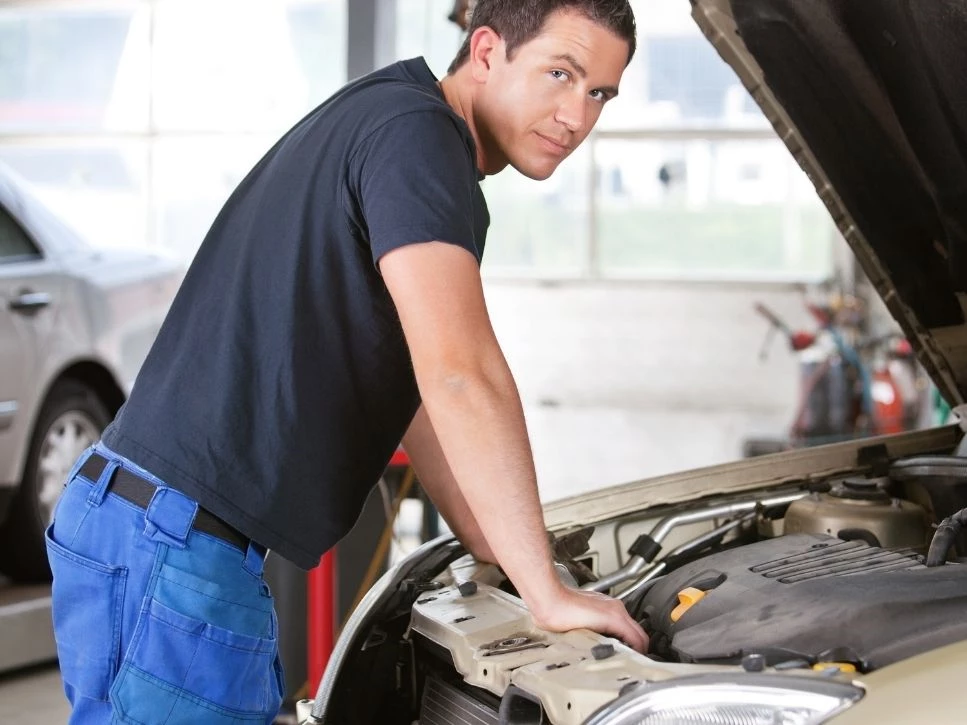
Is Bypassing the Crank Position Sensor Possible? Here's How
A guide to wiring 1, 2, 3, 4 wire oxygen sensors. detailed diagrams.
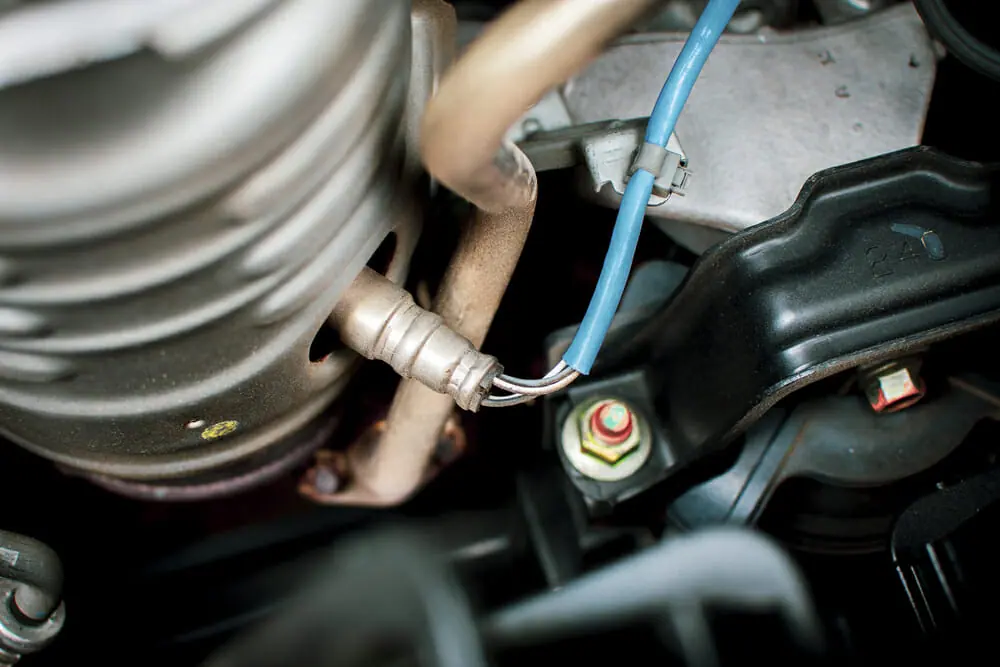
Mastering ASE Testing - The Ultimate Guide for Success

Keeping Current - Charging System Diagnosis and Repair
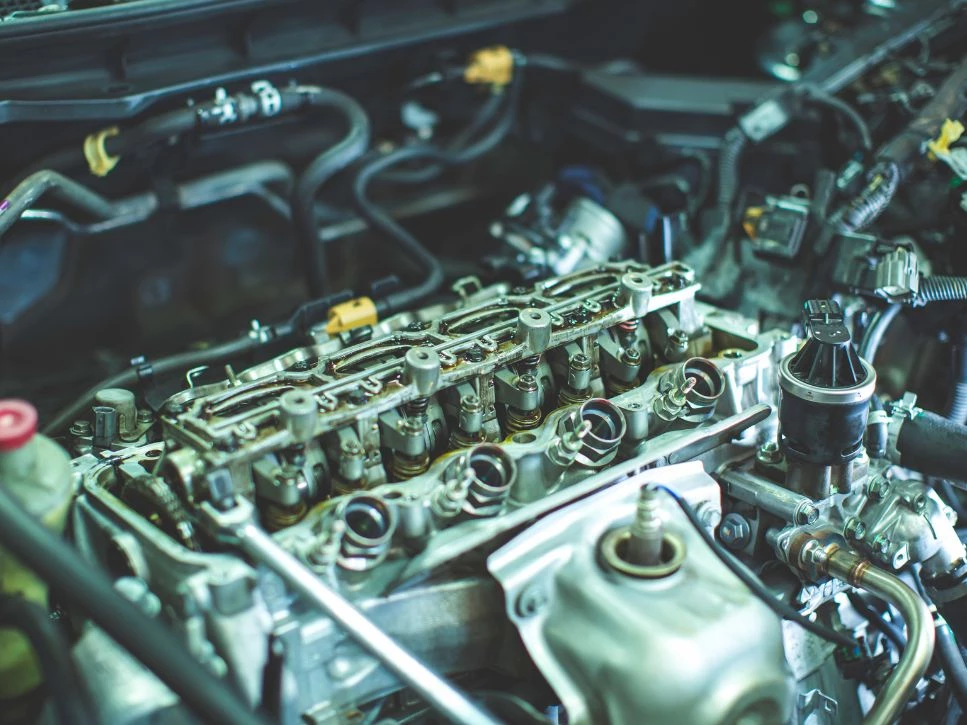
The complete ASE practice test with answers and explanations
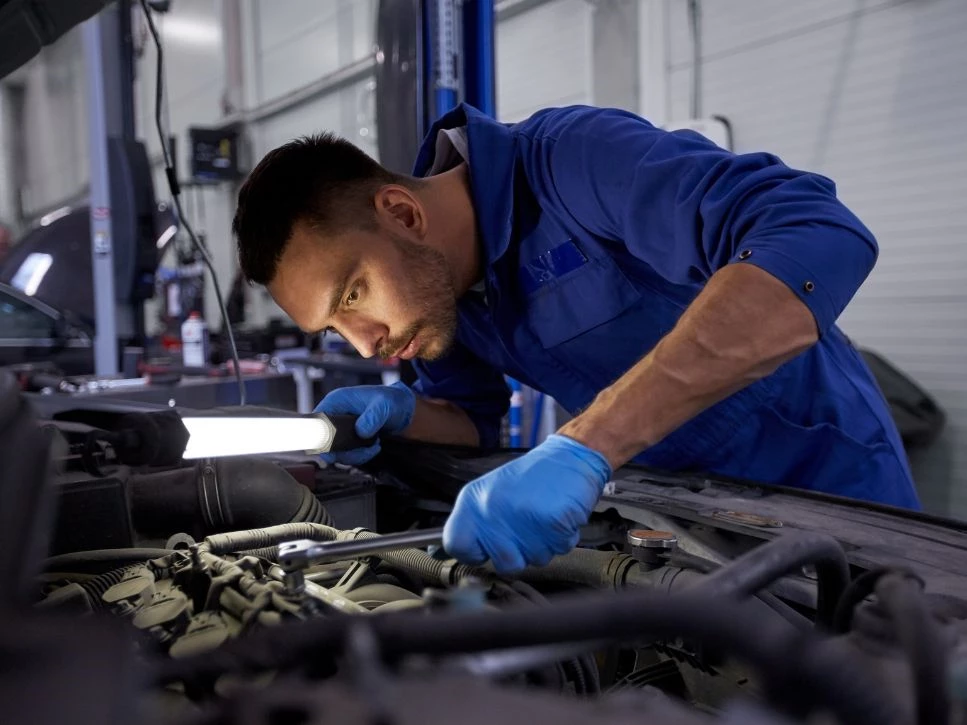
Enhancing the Ride - Accessories Diagnosis and Repair
New York noise-bylaw pilot fines stock Porsche owner $800
Best evs: the top all-electric cars across 7 categories, is this 1985 chevy camaro iroc-z worth us$100,000, 2025 toyota 4runner gets four cylinders, upgraded interior, is the disappearance of the brand specific auto shops upon us, what is cruise control a comprehensive guide.
When the system is set, cruise control will maintain a steady speed for your vehicle
You can save this article by registering for free here . Or sign-in if you have an account.
Article content
Your vehicle’s cruise control system unlocks numerous benefits at the touch of a button — but according to web search data, drivers still have plenty of questions about what it is, what it does, and how it works.
What is Cruise Control? A Comprehensive Guide Back to video
Below, we’ll answer some of the most popular Internet search questions about cruise control, so you can make the best use of this important system.
What is Cruise Control?
With cruise control, your vehicle will maintain a steady speed when the system is set.
What is adaptive cruise control?
With adaptive cruise control, the vehicle will also automatically slow down and speed up to maintain a safe position in traffic.
How does cruise control work?
Cruise control work with a manual transmission just the same way it does with an automatic. Drivers set their cruising speed with a button press, and the system works the throttle automatically to maintain the desired cruising speed as evenly as possible. In some vehicles with a manual transmission, pressing the clutch pedal to shift gears turns the cruise control off, requiring an additional button press to reengage it after a gear change.
In other cars with a manual transmission, pressing the clutch pedal simply pauses the cruise control system a moment, allowing drivers to complete their gearshift. When they’ve released the clutch, the cruise control picks up where it left off — no additional button press required.
Is cruise control more fuel efficient?
Yes. Increasing your vehicle’s speed uses fuel. While cruising, even a highly competent driver who isn’t using cruise control will tend to slow down and speed up in a repeated cycle, possibly several times per minute. Though fluctuations in speed may be slight, they do cause your engine to use more fuel than required. Point is, the more time you spend at a steady speed, the less fuel your engine needs.
For most drivers, using cruise control on the highway at 80 km/h can reduce fuel consumption by about 20 per cent. For drivers who find difficulty in maintaining a steady speed and frequently experience big fluctuations, using cruise control can cut fuel use by over 40 per cent.
Depending on what you drive and how fast you drive it, using cruise control could save you between $4 and $20 per hour — based on information from Natural Resources Canada that shows most drivers who don’t use cruise control on the highway will tend to experience a 10 km/h speed fluctuation about three times per minute.
Drivers who have the most difficulty managing their cruising speed could be using 60 per cent more fuel than they need to.
Is cruise control bad for your transmission?
No. Your vehicle’s engine, transmission and other components are designed to work hand-in-hand with its cruise control system and are extensively tested and integrated with one another for trouble-free performance.
Using cruise control also reduces wear and tear on both your engine and transmission by running things more smoothly and steadily, and reducing workload on both components.
Can you add cruise control to a car?
Yes. Depending on the year, make and model, cruise control may be available for add-on or retrofit. Professional installation is recommended, and you’ll want to talk to a professional about the specific availability of parts and integration for your vehicle.
In many cases with modern cars, it’s generally easier and more cost effective to just opt for a unit equipped with cruise control from the factory. Cruise control is widely available as standard equipment on most modern vehicles.
Can cruise control get stuck?
Yes , but it’s extremely rare. Older cable-based cruise control systems seem more prone to this rare problem, in which the cable can slip or bind, making the throttle stick into position. More modern vehicles with electronic throttle and monitoring systems make this problem even less likely.
If the cruise control on your car fails to disengage when you want to slow down, slip the vehicle into neutral to disconnect drive power from the wheels, pull over, and address the situation.
However, chances are, you’ll never experience this problem.
When should cruise control be used?
Any time you’re trying to drive at a constant speed. Whether around town at 60 km/h, in a residential area at 40 km/h, or out on the highway at 105 km/h, switching the cruise control on makes for a smoother and more fuel efficient drive that’s easier on your engine and transmission. it can also help you do your part to maintain the steady and efficient flow of traffic.
Most cruise control systems can be engaged at speeds above 30 km/h.
When should cruise control not be used?
Any time you can’t safely drive at a steady speed. If the road surface is snowy, icy, slushy or very wet, you’ll want to think twice about switching your cruise control on.
In older cars, having your cruise control engaged on a wet or icy road could allow the vehicle to accelerate or experience wheelspin when driven wheels encounter a low-traction surface. Here, the cruise control system maintains throttle pressure, even in situations where it should be released instead. This could lead to a loss of control.
In more modern vehicles, electronic monitoring is used to automatically disengage cruise control when one of the following happens:
- one or more wheels slip
- one or more wheels leave the surface of the road after a major bump or dip
- the wipers are set to the maximum speed setting in heavy rain
Use your judgement. Safely navigating certain slippery or dangerous driving conditions requires careful manual control of your vehicle’s throttle, and in these situations, you’re best to leave the cruise control off.
What causes cruise control to kick off?
If the cruise control in your vehicle suddenly kicks off, a few things may be to blame.
Sometimes, cruise control disengages automatically when the vehicle’s automatic wipers detect heavy rainfall, or when a wheel spins or (briefly) leaves the surface of the road after a big bump or dip. In other situations, there may be a problem with one or more sensors or switches, including the brake pedal switch, throttle position sensor, or one or more wheel speed sensors.
Your modern cruise control system relies on various sensors and switches to do its job properly. As a failsafe, any problem with these sensors can cause the cruise control system to go offline. If you notice this happening regularly, have your vehicle diagnosed by a professional.
Will the cruise control work with an ABS light on?
Probably not. Your car’s Antilock Braking System works hand-in-hand with your cruise control system, and any fault with the ABS system will typically take your cruise control offline until it’s fixed.
An ABS warning light in your instrument cluster can indicate one of several major problems or malfunctions, so be sure to have a professional investigate as quickly as possible.
Will cruise control apply the brakes?
No, but adaptive cruise control will. Standard cruise control (simply called cruise control) holds your vehicle’s speed as constant as possible once set. More advanced adaptive cruise control systems use camera or radar-based sensing to determine the traffic situation in front of your vehicle, and can automatically apply the brakes to maintain a pre-set following distance.
With cruise control, drivers need to brake to slow down as they close in on a slower vehicle in traffic. With adaptive cruise control, the system makes these braking inputs automatically, and the vehicle speeds back up to its pre-set cruising speed once traffic clears.
Before you buy, be sure to determine which type of cruise control system is fitted to the car you’re considering.
What is Super Cruise?
Super Cruise is a next-level driver assistance feature available on certain GM vehicles.
With Super Cruise, the vehicle uses special GPS hardware and sensors to accurately compare its position to a 3D map of pre-qualified highways .
On these pre-qualified highways, Super Cruise allows drivers to go hands-free for extended periods as the vehicle automatically maintains its cruising speed, adjusts that speed for changing traffic conditions, and even precisely follows the curves in the road. It can even make hands-free lane changes.
Super Cruise is not an autonomous system, and in order for it to work, drivers need to keep their eyes on the road — there’s even a camera that monitors the position of the driver’s eyes to make sure they’re focused on the road ahead.
- Commercial trucks are going electric, but it's going to be a long road
- Evolutionary: The Mercedes-Benz G-Wagen has never strayed far from its roots
- How to jump-start a car—a step-by-step guide
- Testing Mitsubishi’s AWD systems and Snow mode on ice
- 12 things to know about the 2025 Ram 1500 Ramcharger REx
Justin Pritchard
Justin Pritchard is an experienced motoring expert whose work is read and watched by Canadians across the country on a weekly basis. Starting his career at Auto123.com back in 2005 (while finishing his final year of studies at Laurentian University in Sudbury, Ontario), Justin quickly applied his passion for writing, presenting, and photography, working under some of the most recognized editors in the Canadian motoring scene.
Justin has written one of the largest collections of used car buyer guides on the internet, and his TV program, AutoPilot, has aired over 600 episodes across 16 seasons. Presently, AutoPilot is the only English-language motoring program on Canadian cable TV, though he's lent his informative style and easy-to-identify voice to video features for Youtube, Driving.ca, Autotrader.ca, Motoring TV, and elsewhere. With 4 years as co-chair of the Canadian Car of the Year Awards (CCOTY) program, a passion for vehicle testing shines though in all of his work.
A passion for photography from a young age makes Justin as comfortable behind the camera as in front of it, and capturing motoring memories from the scenery of beautiful Northern Ontario is a priority in much of his work. The particularly harsh winter climate in this part of Canada makes Justin a particular expert on winter driving, winter tires, and extreme-weather safety.
Major awards won by the author
Contact info.
Youtube: @JustinPritchard
Postmedia is committed to maintaining a lively but civil forum for discussion. Please keep comments relevant and respectful. Comments may take up to an hour to appear on the site. You will receive an email if there is a reply to your comment, an update to a thread you follow or if a user you follow comments. Visit our Community Guidelines for more information.
Lorraine Explains: What if you just kept your car for its intended lifespan?
Motor mouth: hybrid cars to the rescue, incredible radio flyer wagon car on auction block.
Affordable EVs
Small trucks
Popular Crossover SUVs
Practical 3-row SUVs
Minivans for the whole family
Compact Cars
Luxury SUVs
Affordable AWD SUVs
All things automotive: breaking news, reviews and more. Wednesdays and Saturdays.
- There was an error, please provide a valid email address.
A welcome email is on its way. If you don't see it, please check your junk folder.
The next issue of Driving.ca's Blind-Spot Monitor will soon be in your inbox.
We encountered an issue signing you up. Please try again
Best retrofit Apple CarPlay and Android Auto units
You don't need to buy a new car to add Apple CarPlay or Android Auto.
5 Essential car accessories every driver should buy
There's lots of aftermarket gear out there, but get these add-ons first—they'll make your daily drive more comfortable and safe
The top 5 best motorcycle accessories we've tested
After 40 years of testing motorcycles, these are the five pieces of gear David Booth can’t and won’t live without
Tools you'll need for DIY tire swaps
Changing tires twice a year, it won’t take many seasonal swaps to pay for your investment
Top car organizers to declutter the cabin
Discover some of the top-rated car organizers that will help declutter the car and arrange belongings for a hassle free drive
This website uses cookies to personalize your content (including ads), and allows us to analyze our traffic. Read more about cookies here . By continuing to use our site, you agree to our Terms of Service and Privacy Policy .
Edit your picks to remove vehicles if you want to add different ones.
You can only add up to 5 vehicles to your picks.
Looks like you've reached your saved article limit!
You can manage your saved articles in your account and clicking the X located at the bottom right of the article.

What Is Cruise Control In A Car and How It Works
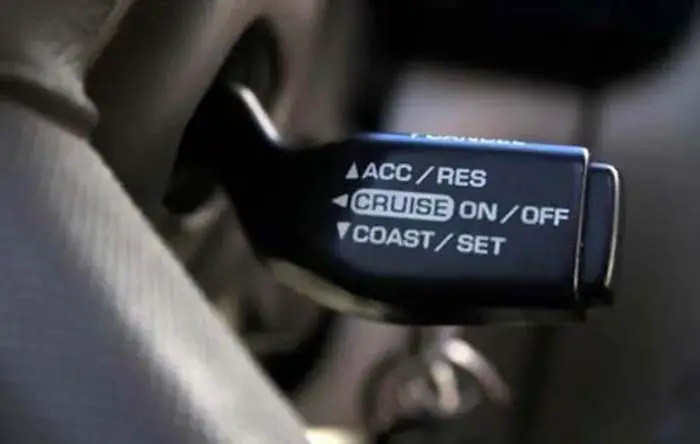
According to the research , cruise control reduces the mental workload of the driver. It reduces fatigue and increases the comfort of driving a long distance. It is also good to avoid speed violations and resists the temptation to speed up the car.
Although cruise control can be a great help on long trips by maintaining a consistent speed and freeing up the driver’s hands, it is important to remember that it is not a replacement for a driver’s attention and care. Drivers must still be vigilant in paying attention to the road and their surroundings, and be prepared to take over control of the vehicle if necessary. Additionally, drivers should periodically check the vehicle’s speed to ensure that it is still within the desired range.
Fortunately, on this page, you can learn everything you need to know about cruise control. In this powerful article, you are going to quickly learn what cruise control is in a car.
Related Post: Advantages & Disadvantages Of Adaptive Cruise Control
What Is Cruise Control In Vehicle
Cruise Control also known as speed control or auto cruise is a system that allows you to keep the car at a constant speed without holding your foot on the accelerator pedal. Technically, it is an electronic feature that reprograms the car’s setting to keep the car at a constant speed regardless of pressing and holding the foot on the accelerator pedal.
This cruise control is a kind of driving on auto-pilot mode. It automatically controls the car’s steady speed by taking the control of the throttle body. It comes in cars having a drive-by-wire system where an electronically controlled throttle body is manipulated by a cruise control computer. The cruise control computer is a small computer that you can fit under the hood or in the cabin behind the dashboard.
Related Post: Does Cruise Control Save Gas? | Confused!? Here’s A Comprehensive & Detailed Guide
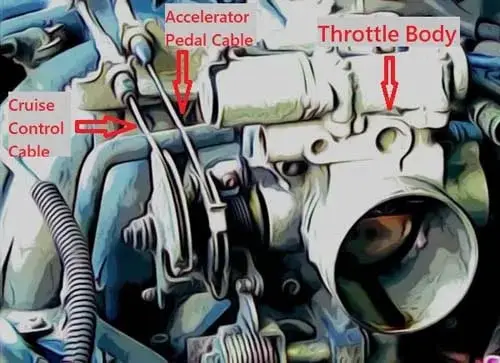
In the early mechanical linkage throttle body, two cables are used for operating the cruise control, one cable goes to the accelerator pedal, and the second cable goes to the vacuum actuator to operate the throttle body for cruise control.
This vacuum actuator also pulls the cable connected to the accelerator pedal and actuates the throttle butterfly valve. Modern cruise control systems have a memory feature which means, it remembers the last time the cruise control system was canceled.
You can resume the previously canceled speed by tapping on the RES button. With the activated cruise control system, you can override the speed of the car by pressing the accelerator pedal. But once, you take the foot off the accelerator pedal, the cruise control reduces the speed until it reaches the last SET speed.
This is an Alert Some cars do not engage the cruise system below a certain speed, typically less than 40 km/h or 25 mph.
Related Post: The Ultimate Guide To Cruise Control Symbol & Adaptive Cruise Control Symbol
Frequently Asked Questions (FAQs)
The purpose of cruise control is to maintain a constant speed by automatically adjusting the throttle. This can be beneficial for the driver, as it reduces the need to repeatedly adjust the accelerator pedal. Additionally, it may help to improve fuel efficiency and emissions by reducing the amount of time the engine spends idling. However, cruise control is not without its drawbacks – it can lead to overuse of the brakes and increased wear on the tires, and it may not be suitable for all road conditions.
The cruise control feature on a car does not drain the battery. This is because the cruise control system is not continuously running when engaged, but rather it only activates when the car is traveling at a consistent speed. When activated, the cruise control system will automatically adjust the throttle and brakes to maintain a set speed, which takes very little power from the battery. Therefore, engaging the cruise control feature will not cause your car’s battery to drain any faster than if you were driving without it.
About The Author
Related Posts
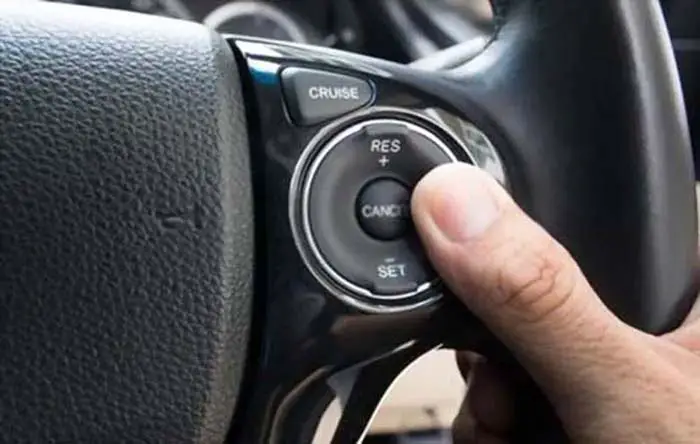
How To Turn OFF Cruise Control, When To Use It & When Not
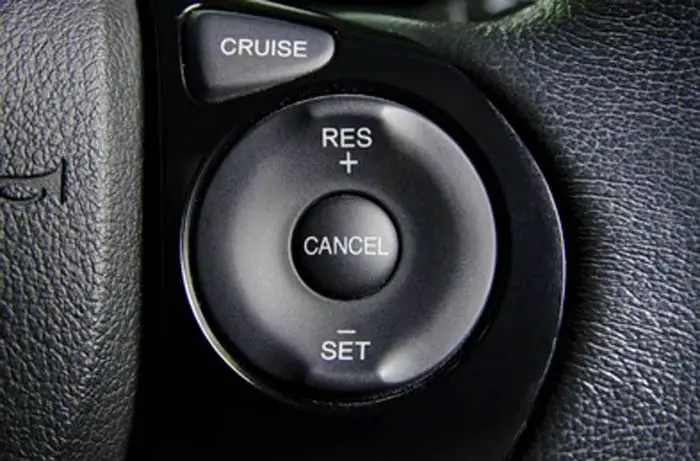
How Does Cruise Control Work: We Have The Best Answer
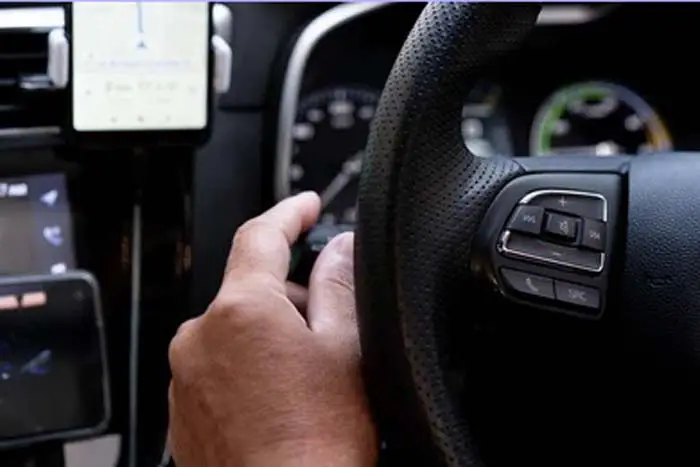
Advantages & Disadvantages Of Adaptive Cruise Control
Leave a comment cancel reply.
Your email address will not be published. Required fields are marked *
Save my name, email, and website in this browser for the next time I comment.

- Today's news
- Reviews and deals
- Climate change
- 2024 election
- Fall allergies
- Health news
- Mental health
- Sexual health
- Family health
- So mini ways
- Unapologetically
- Buying guides
Entertainment
- How to Watch
- My watchlist
- Stock market
- Biden economy
- Personal finance
- Stocks: most active
- Stocks: gainers
- Stocks: losers
- Trending tickers
- World indices
- US Treasury bonds
- Top mutual funds
- Highest open interest
- Highest implied volatility
- Currency converter
- Basic materials
- Communication services
- Consumer cyclical
- Consumer defensive
- Financial services
- Industrials
- Real estate
- Mutual funds
- Credit cards
- Balance transfer cards
- Cash back cards
- Rewards cards
- Travel cards
- Online checking
- High-yield savings
- Money market
- Home equity loan
- Personal loans
- Student loans
- Options pit
- Fantasy football
- Pro Pick 'Em
- College Pick 'Em
- Fantasy baseball
- Fantasy hockey
- Fantasy basketball
- Download the app
- Daily fantasy
- Scores and schedules
- GameChannel
- World Baseball Classic
- Premier League
- CONCACAF League
- Champions League
- Motorsports
- Horse racing
- Newsletters
New on Yahoo
- Privacy Dashboard
- Buying Guides
I let the Lexus TX550H+ PHEV take over the steering wheel for me, and it was the biggest leap of faith I’ve had driving a car
One of the exciting things about covering today’s best electric cars is that I’m constantly finding features that show me how much the technology has evolved in the 15+ years since I last bought a car. I have to admit, all-electric vehicles like the Ford F150 Lightning I test drove make me jealous about the long-term savings of EVs , but I found out that many plug-in hybrid vehicles , commonly referred to as PHEVs , are also bundled with impressive driving technology,
After test-driving the Lexus TX550H+ for a week , I became acquainted with a driving feature that I’ve never come across before. It’s called dynamic radar cruise control, which is one of the many safety features that make up the Lexus Safety System+ to keep drivers safe. This feature essentially allows the vehicle to cruise at a specified speed, all while applying appropriate acceleration and braking throughout the ride. And yes, it can even move the steering wheel for you as well.
Honestly, my first time trying it out felt like a roller coaster ride. There’s the apprehension about putting faith in a computer system to drive for me, followed by the increase in heart rate I experienced. I bet that my Apple Watch Series 9 was probably reading over 100 beats/minute at the moment I let my foot off the pedal and my hands from the steering wheel.
Obviously, it’s an experience I’m sure to retell to anyone shopping around for their next car — but I learned some valuable lessons from it.
Driving habits will change
Life’s all about change, so while it may be tough to adapt to something new, you inevitably have to when it comes to operating newer vehicles. For example, I still find myself leaning over to my right side while backing up a newer EV — even though I could rely on the backup camera to guide me. The same applies to dynamic radar cruise control on the Lexus TX550H+ because now I’m leaning on technology to do everything.
Since the system automatically guides the steering wheel on its own, I don’t need to have such a tight grip on the steering wheel. That’s because the lane assist feature uses the vehicle’s cameras and radar to keep the SUV steady in its lane while driving. While I can manually override the steering and drive it myself, the first time trying dynamic cruise control felt jarring because I wasn’t used to the steering wheel ‘fighting’ my guidance.
However, I soon became acquainted with its driving, and it certainly has its merits. While the obvious case for dynamic cruise control would be for long trips driving on highways, I was equally as impressed by its effectiveness on local roads. That’s because it will apply the brakes and come to a full stop when it senses a vehicle is up ahead, while also accelerating the moment traffic starts moving. For those stop-and-go days when there’s congestion, it certainly helps.
It’s called driving assist for a reason and not automated driving
Technology is supposed to help us, but it shouldn’t make us lazy. That’s why Lexus (and many other car makers) often refer to this feature as "driving assist" and not "fully automated driving." During my week driving the Lexus TX550H+, I fully understand why this feature is more of an assistance than anything else.
There’s clearly a limitation on what it’s able to do. Call it nearsightedness, but this technology only adapts to what’s in front of it. For example, it’ll keep the TX550H+ at a set distance from the car in front of it to maintain the cruise control speed I set. However, the computer system lacks our perception to know the upcoming road conditions farther ahead.
An example of this is a steep incline or hill while driving on the highway. Often than not, the dynamic cruise control will maintain its speed and would eventually apply stronger acceleration a little after it first hits the bottom of the incline — rather than anticipating it beforehand and speeding a little to make it less of an effort. So there’s still work to be done before it can match our level of perception.
Frankly, it’s a safety feature that assists drivers, which I think is a tremendous benefit because our safety is paramount. I often think about my own father, who’s at that age when he’s simply not as sharp or reactive with driving. That’s the problem many people face who have older parents who still think they are capable of driving. For that older population, this technology can not only make them safer drivers but also protect other drivers.
This is still much better than the cruise control I’ve been used to all my life, so I’m glad this is increasingly becoming a standard feature in most vehicles.
More from Tom's Guide
New York Auto Show 2024: here’s the one vehicle I'd buy over all EVs
Interest in EV trucks like F150 Lightning is plummeting — here's why
The Volkswagen ID. Buzz is the weirdest EV I’ve seen yet — here’s why I might buy one
Recommended Stories
Autoblog's editors' picks: our complete list of the best new vehicles.
Here are all the pickups, SUVs, sedans, coupes, hatchbacks, minivans, wagons, sports cars, convertibles and electric vehicles we recommend.
Volkswagen Atlas Luggage Test: How much fits behind the third row?
The VW Atlas has 20.6 cubic feet of space behind its third row. We put that space to the test.
Juan Soto: 'It's an honor' to be chosen as Topps Series 2 cover player
Juan Soto loves Yankees fans, especially how loud they can get during games.
Chiefs favored over Ravens in NFL season opener, but not by too much
The Chiefs open up as a small favorite over the Ravens in the opener.
Google Pixel 8a review: The best midrange Android phone gets flagship AI features
The Pixel 8a delivers handy AI features alongside a beautiful 120Hz OLED screen, excellent cameras and way above-average battery life for just $499.
Apple's 10th-gen iPad hits a new low of $334
Amazon has marked down Apple's 10th-generation iPad to an all-time low price.
The most stolen cars in 2023: Two brands top the list
The top-three stolen cars in the United States are the Hyundai Elantra, the Hyundai Sonata, and the Kia Optima, while pickup thefts decreased sharply.
Stock market today: Stocks edge higher with inflation data in focus
Attention is on this week's CPI report, seen as a potential starting gun for Fed rate cuts.
Tiger, Rory, Ryder Cup headline Valhalla’s tales of triumph and heartbreak
The last time Valhalla hosted the PGA Championship, Rory McIlroy emerged victorious. To date, it's his last major victory.
Monday Leaderboard: Rory’s ready for the PGA Championship
Rory McIlroy has his game ready heading into the PGA Championship, where he will once again try to halt a major-less streak that has reached 10 years.
Healthy growth helps B2B food e-commerce startup Pepper nab $30 million led by ICONIQ Growth
Pepper, the e-commerce platform for food distributors, continues to edge into Sysco and US Foods territory by giving smaller, independent distributors a technology leg up. The company developed an ordering system specifically for independent food distributors that supports catalogs of over 100,000 items and enables these companies to launch mobile apps and websites so that they can accept orders and payments online. Co-founder and CEO Bowie Cheung, who previously worked at Uber Eats, said the company now has 200 customers among a market of 25,000 food distributors.
Bronny James medically cleared to play in NBA, expected to remain in draft
James declared for the NBA Draft in April, but maintained his NCAA eligibility and entered the transfer portal.
Michael Cohen expected to testify at Trump trial, Taylor Swift unveils new 'TTPD' set list and 2 surprising NBA playoff wins
Get caught up on this morning’s news: Michael Cohen to testify, Taylor Swift’s ‘TTPD’ set list and more in today’s edition of The Yodel newsletter
CD rates today, May 13, 2024 (earn up to 5.15% APY)
Compare the best CD rates available today vs. the national average.
'Carves through branches like a full-size': Grab this bestselling mini chainsaw for just $40 — plus other deals of the day
Also on our cheat sheet: Spring savings on Coach, Le Creuset, Apple and more.
The Morning After: Those geomagnetic storms are messing with farming tech’s GPS systems
The biggest news stories this morning: Waymo’s robotaxis are making 50,000 paid trips every week, Most Apple App Store developers aren’t trying outside payments, Alienware m16 R2 review.
Is idling in your car bad for you?
Always waiting in your car with the engine running at school drop-off or in the drive-through line? Here's why health experts want you to stop.
Mortgage rates today, May 13, 2024: Rates begin trending downward
These are today's mortgage rates. Although rates seem high, they are more than 40 basis points lower than they were six months ago. Lock in your rate today.
Caitlin Clark's first WNBA game: How to watch the Indiana Fever vs. Connecticut Sun season opener
Are you ready to watch Caitlin Clark's first WNBA game?
Inflation and consumer spending updates ahead: What to know this week
A crucial reading of inflation faces investors in the week ahead after a string of disappointing reports to start the year dampened investors' interest rate cut hopes.
- Bahasa Indonesia
- Slovenščina
- Science & Tech
- Russian Kitchen
10 most popular cars in Russia (PHOTOS)

In Russia, every third resident has their own vehicle. At the beginning of 2021, 45 million passenger cars were registered in the country. Almost a third of these are made by the Russian car company LADA. Toyota is currently the second most popular brand, with over four million cars in the country— the RAV4 and Camry are the most popular models. Next come Hyundai and Kia with over two million cars each in the country.
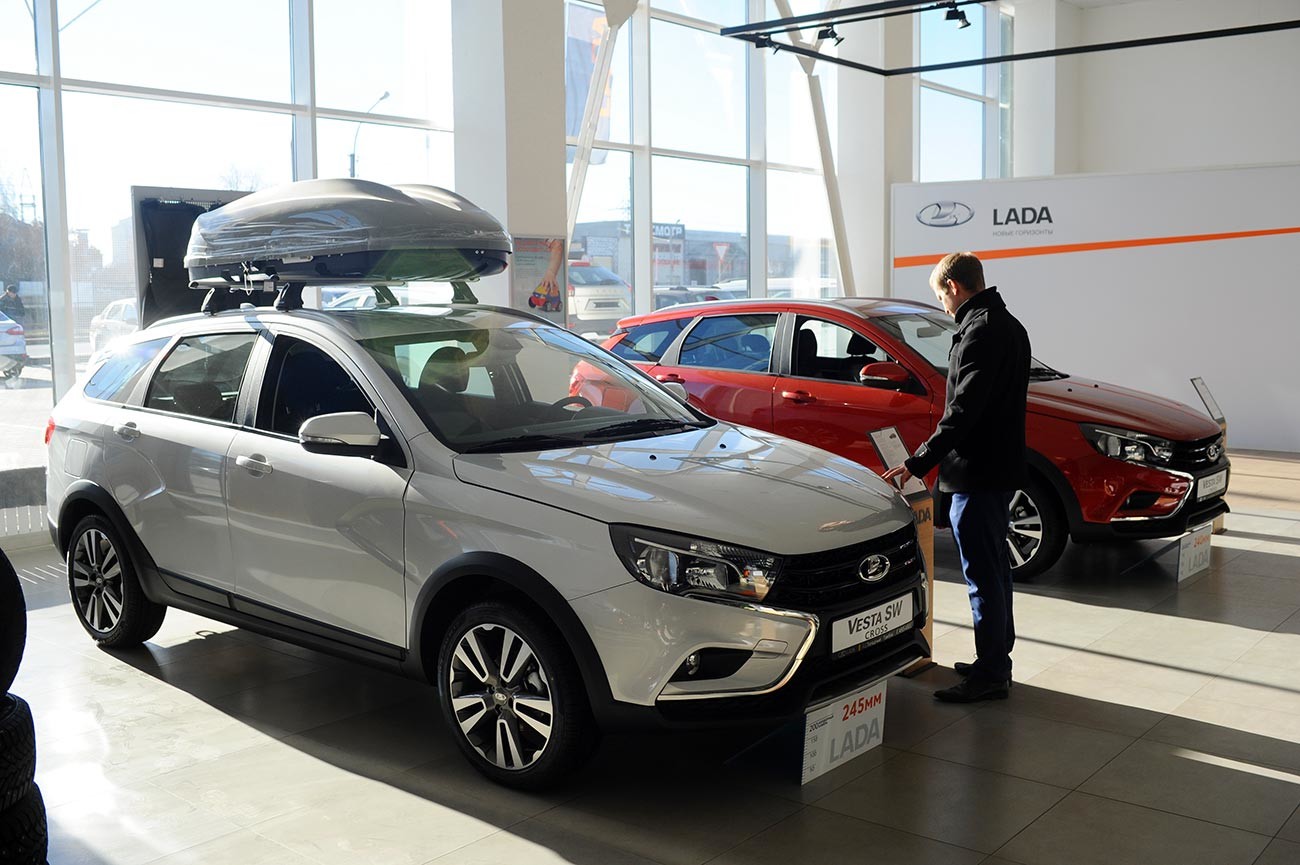
Compared with the United States and most of Europe, where around two out of three residents have their own vehicle, the car market in Russia is still relatively open and continues to develop. Russia imposes rather large customs duties on imported cars in order to force international car companies to produce their vehicles inside the country. As a result, many foreign car manufactures have localized their production in Russia and in some cases even modified their car models to accommodate Russian road conditions and people's tastes.
Russians prefer low-budget crossovers and sedans. Hatchbacks and station wagons are less common, and small electric cars are generally an unusual sight (there are just 11,000 electric cars in the country, and 9,000 of them are the Nissan Leaf).
"Russians are not interested in hatchbacks because of the lack of association with a high position in society," says Alexey Kozhukhov, an automotive marketing expert. He notes that in the Soviet period, a long Volga sedan was considered a high-class car and a symbol of power, and that these associations have been passed on to subsequent generations.
Manufacturers have created economy-class sedans and SUVs that are specifically catered to the Russian market. According to the Association of European Businesses , in the first half of 2021 around 45% of new cars sold were crossovers.
Best selling cars in Russia in 2021
1. lada granta.
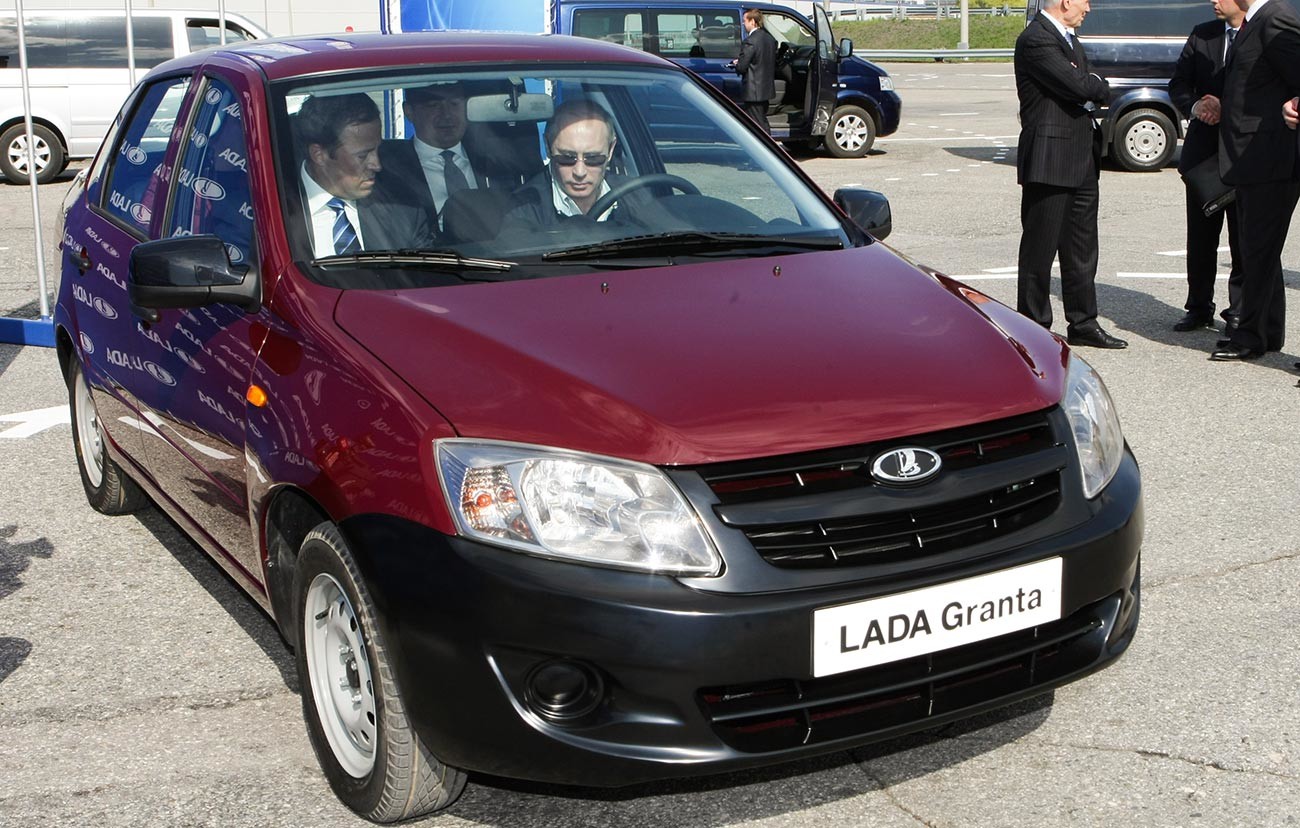
The simplest and cheapest car on the Russian market, the Granta is assembled at the AvtoVAZ plant in Togliatti. Some typical customer reviews state that the car is “reliable and without problems” or that “I didn’t have big illusions and got what I expected.” A sedan without air conditioning costs 560,000 rubles ($7,800), and the LUXE version with a heated windshield, cruise control and an automatic transmission costs 780,000 rubles ($11,000).
2. Lada Vesta
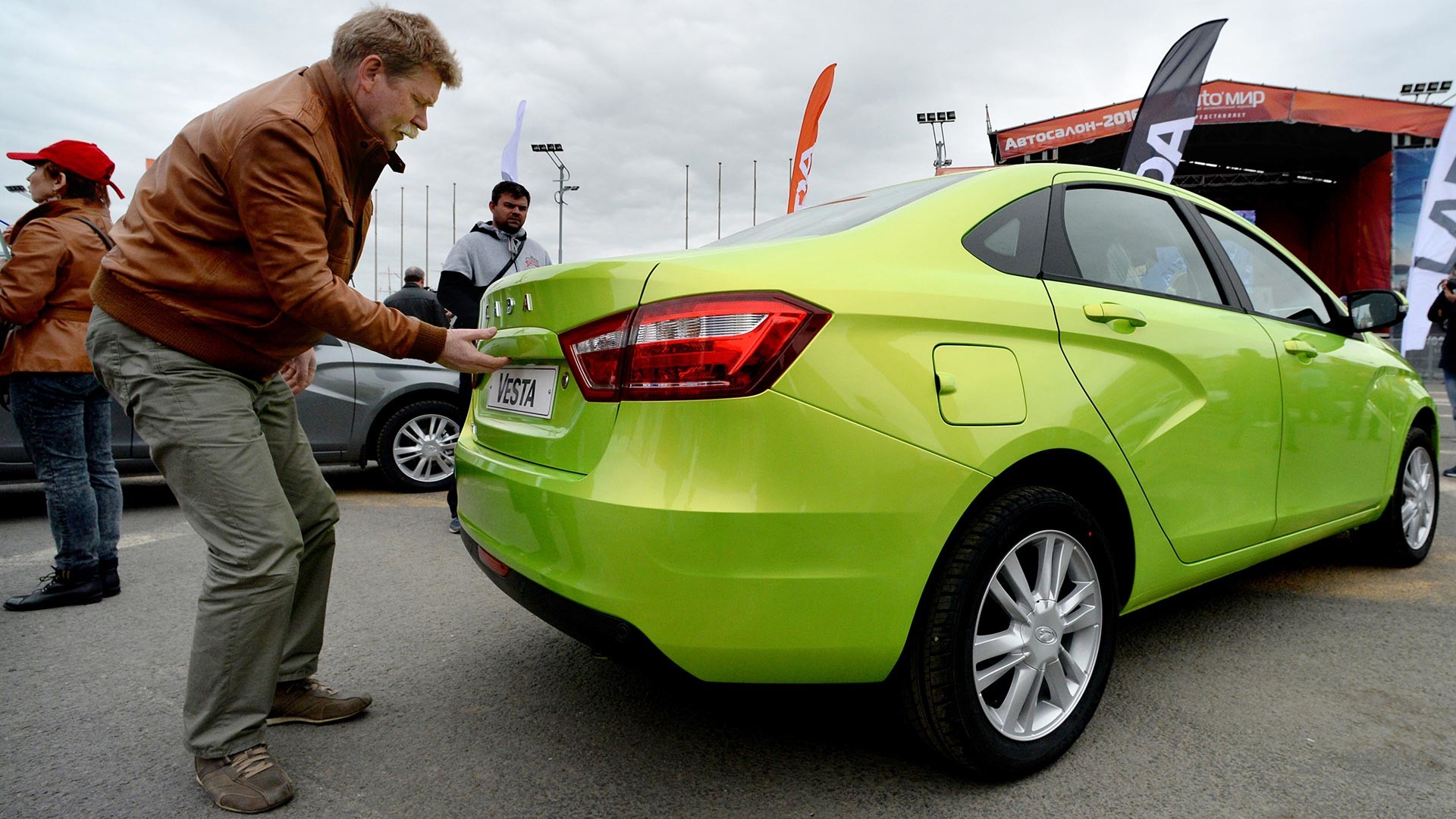
Lada’s latest model, the Vesta, is designed to be a sedan and crossover, although there is also a sports version. The car meets most consumers’ needs but is cheaper than foreign brands. “When I bought it, I understood that it was AvtoVAZ and there might be problems ahead, but the desire to buy this beauty simply prevailed, and I only wanted a new car in this budget,” one Russian driver writes , adding that he didn’t want to buy a used car.
The simplest model with a manual transmission, air conditioning and airbags sells for 795,000 rubles ($11,200), while the most expensive “Sport” version costs 1.2 million rubles ($17,000).
3. Hyundai Creta
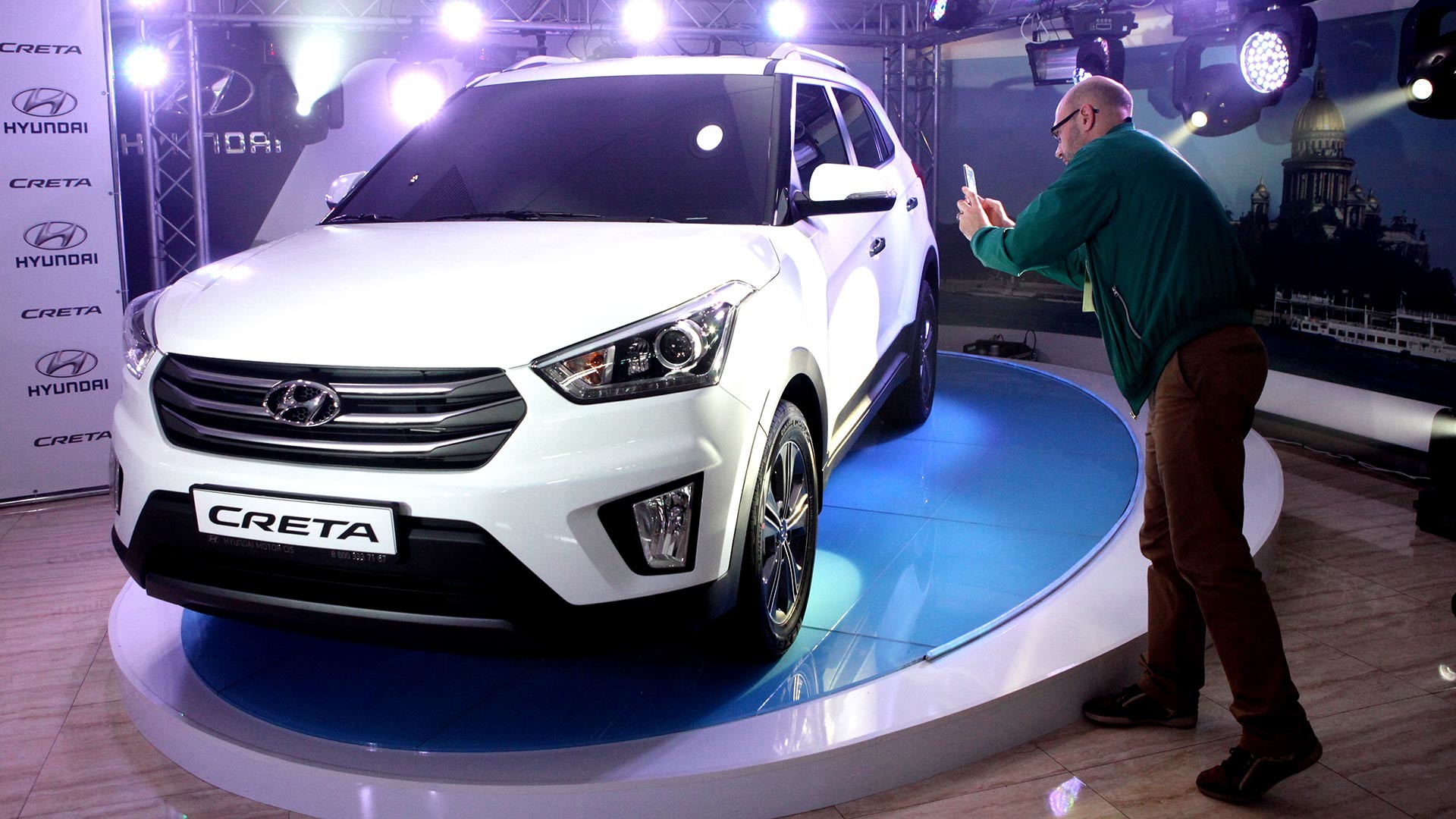
This crossover is one of the most inexpensive cars in its class in Russia. Its price ranges from 1.2 million rubles ($17,000) to about 2 million rubles for the top version ($28,000). “Many Creta owners with a 1.6-liter engine complain about the sluggish dynamics. I wasn't looking for a racing car, so the car is fine for me. My priority was AWD, which fully justified itself. Now I can go to nature any time and not worry about getting stuck on a dirt road,” writes one driver from the Urals.
Hyundai also was also the first car manufacturer in Russia to offer online sales directly from the factory without the dealer.
4. Hyundai Solaris
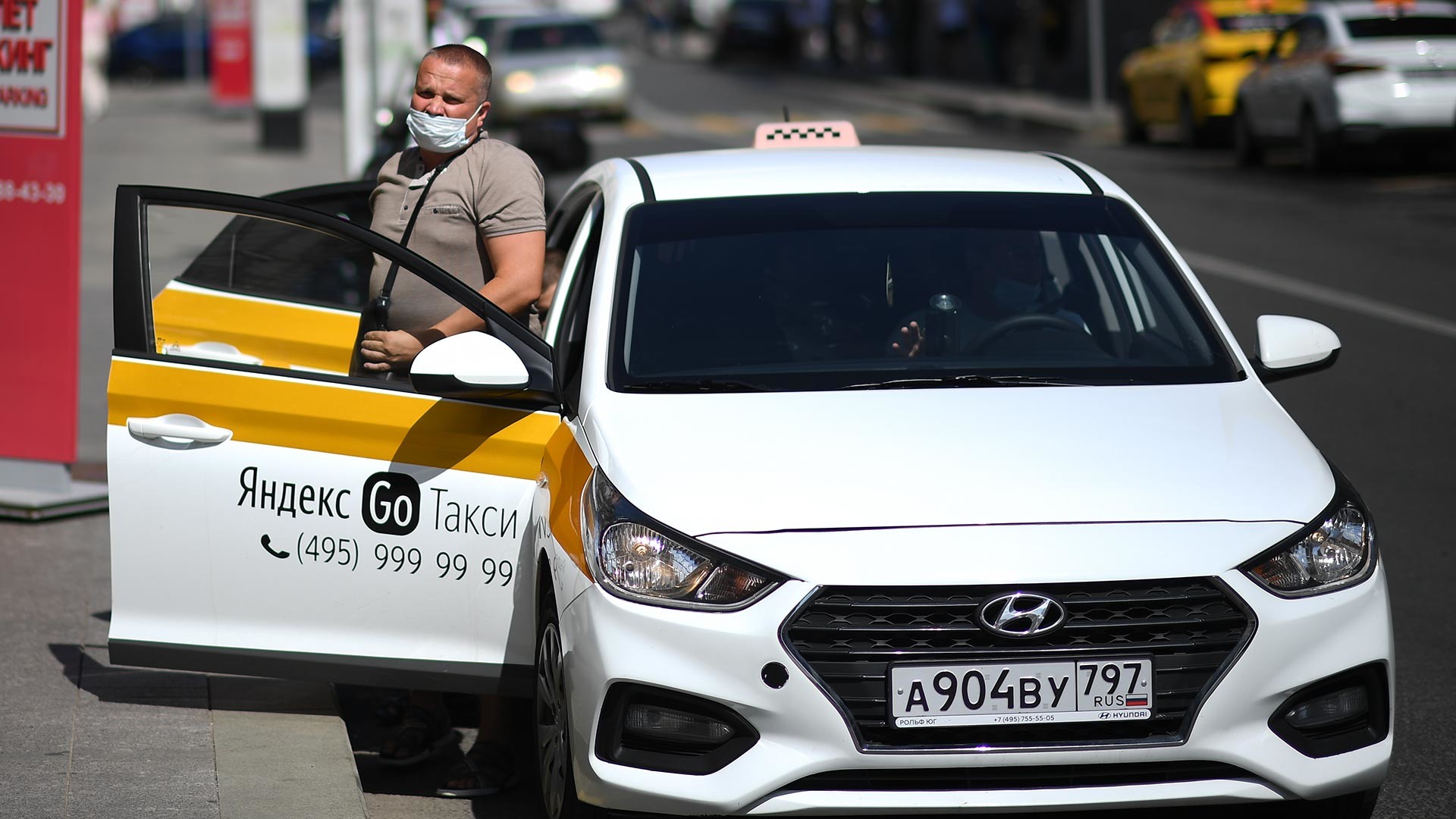
The Solaris is a version of the Accent that was localized specifically for Russia in 2010 and is produced in St. Petersburg. Russian drivers seem quite satisfied with the model, which is a budget sedan that is resistant to temperature changes and harsh weather conditions and is generally reliable. “I wanted to use it for at least five years without looking under the hood,” wrote one driver about why he chose this model.
The Solaris ranges in price from 890,000 rubles ($12,500) to 1.3 million rubles ($18,300) for the top configuration.
5. KIA Rio
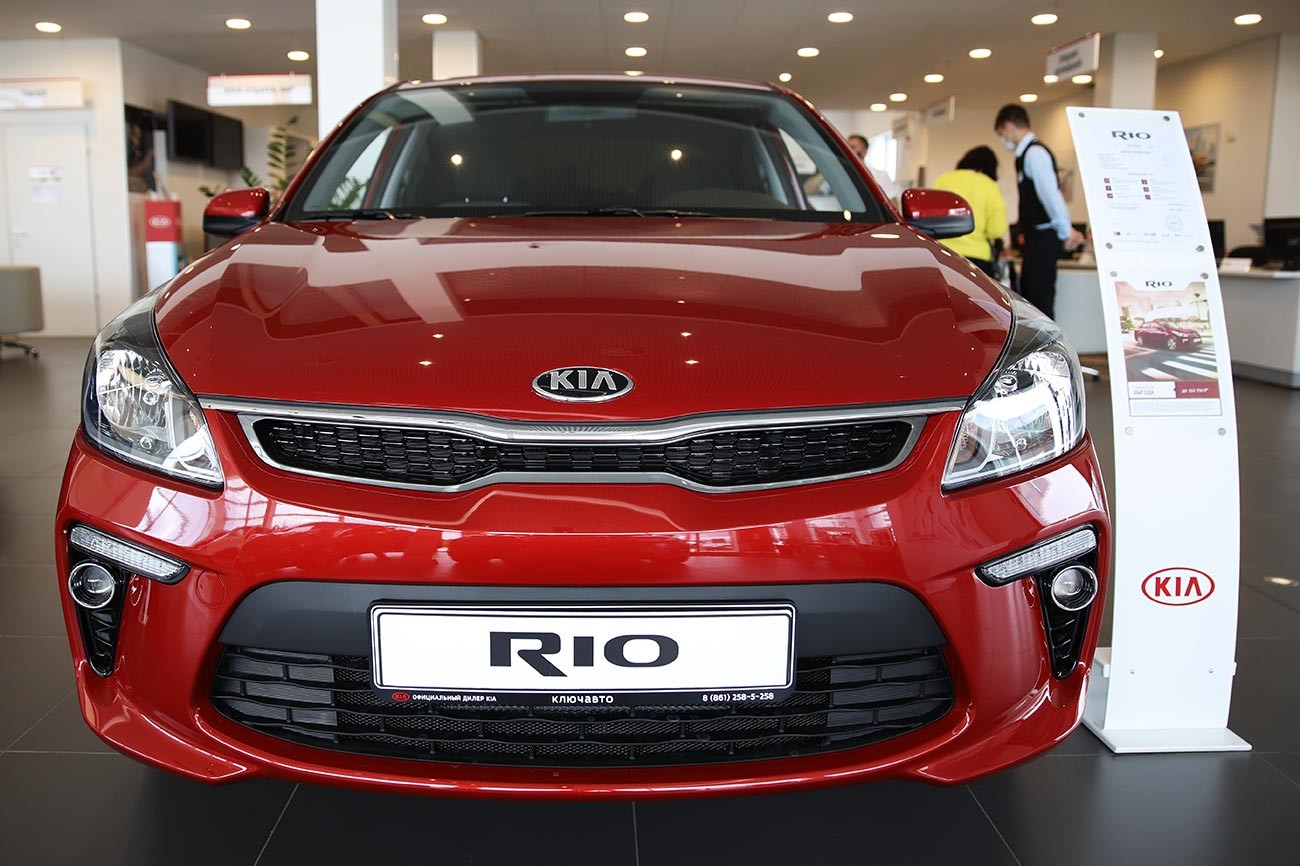
The KIA Rio has also been produced in St. Petersburg since 2011, and, like the Solaris, only comes in a sedan model, which is more popular among local customers. The design and technical characteristics of the Russian Rio are slightly different from versions sold in other countries. Many drivers note that it has good heating and the ability to start at minus 30 Celsius. As a result, the car has become one of the best-selling models in the country. It ranges in cost from 950,000 ($13,400) to 1.3 million rubles ($18,300)
6. Volkswagen Polo
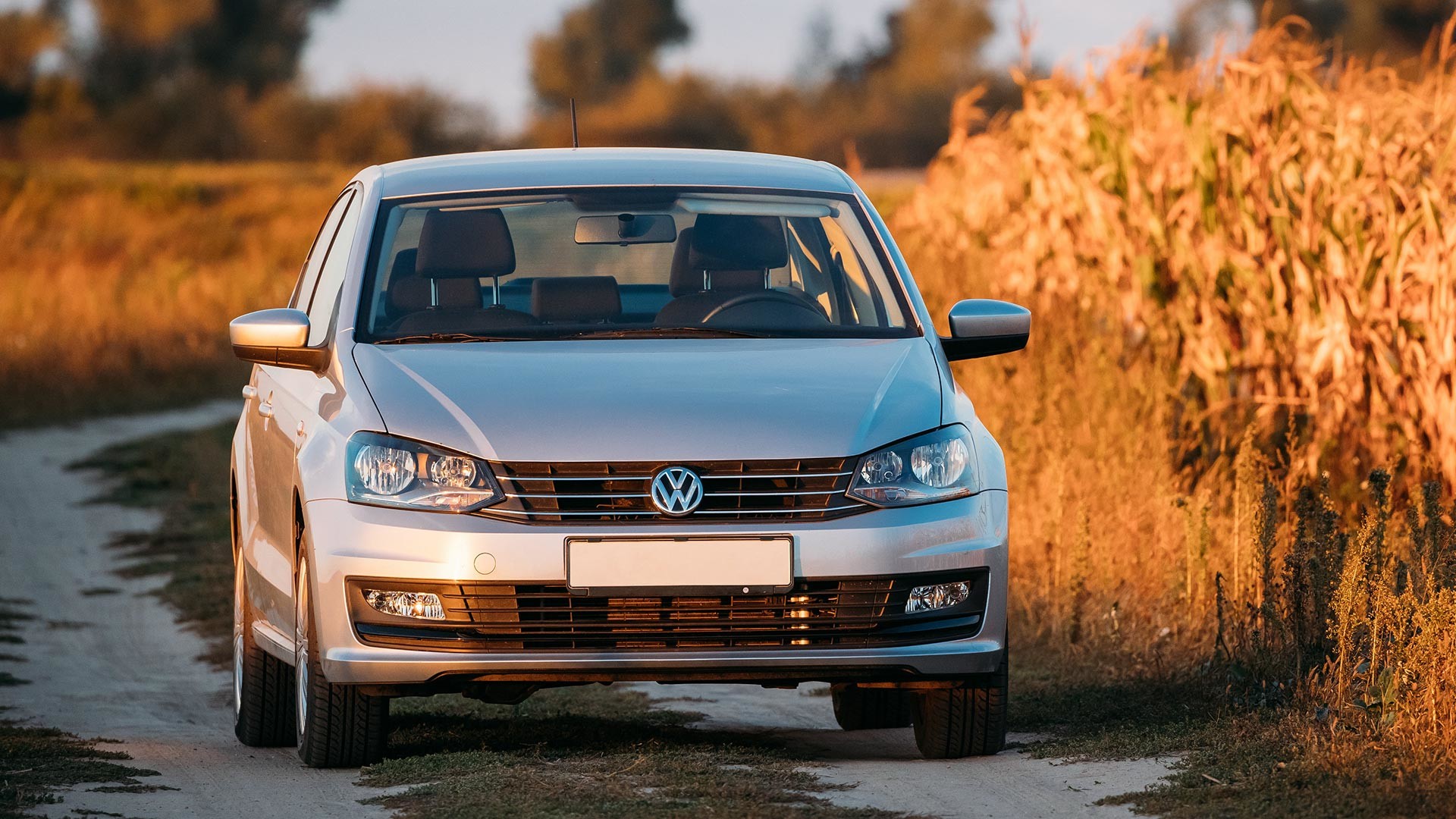
All Polo models sold in Europe are hatchbacks, but in Russia Volkswagen opted to modify this legendary model to produce what has become one of the most popular sedans in Russia. “The car is a car. The trunk is huge and comfortable. There is quite a lot of space in the cabin, both in front and behind. The driving is not bad, better than other cars of this class,” writes one owner.
The Polo Sedan is assembled at a factory in Kaluga (about 200 km from Moscow). The cheapest model costs 1 million ($14,100), while the most expensive version goes for 1.9 mln rubles ($26,800).
7. Lada Niva
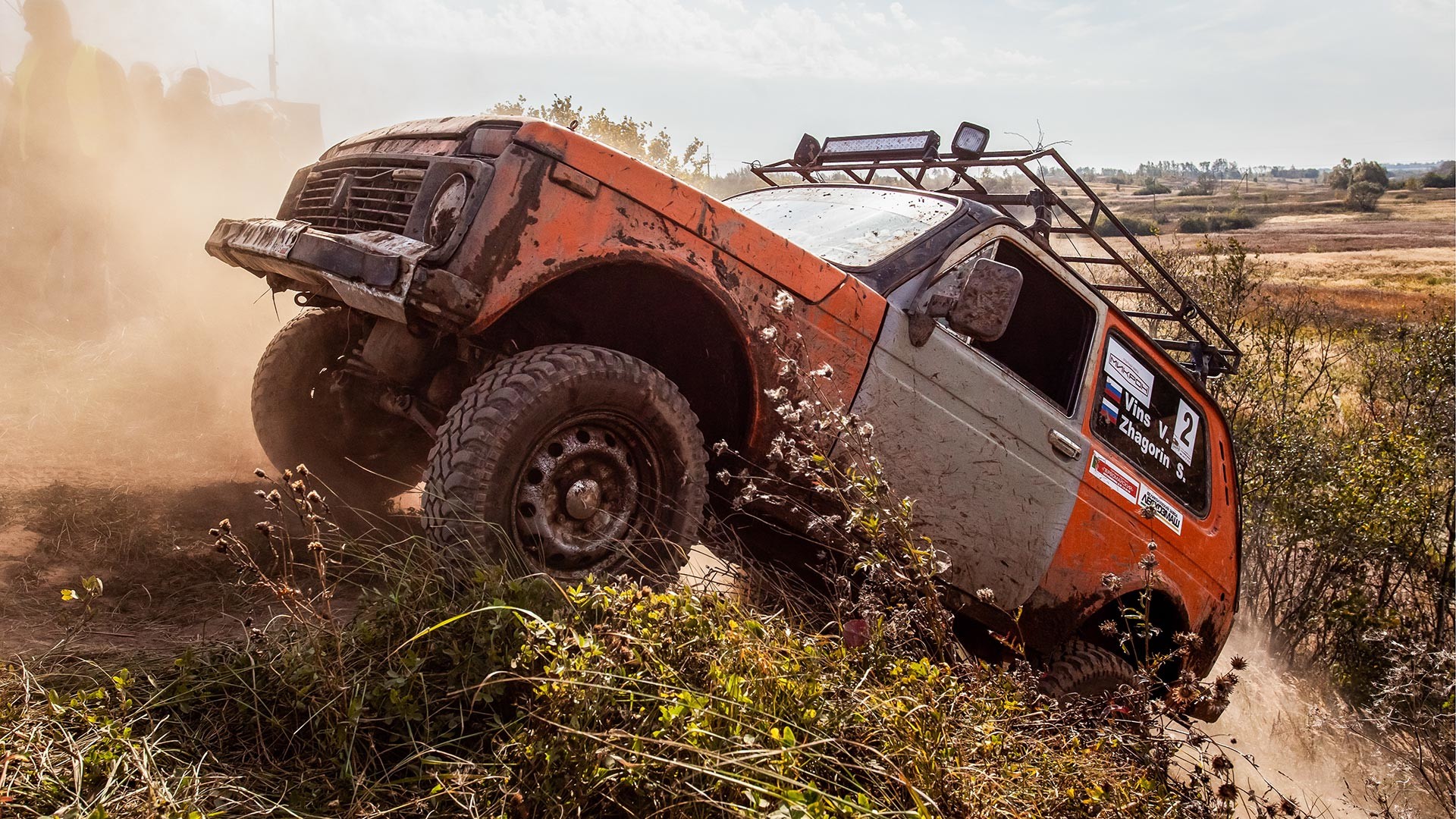
The first Soviet SUV is still in production and has a loyal customer base for its combination of being extremely cheap and strong for off-road driving. Many Russians use it to get to their remote dachas.
The simplest version costs 660,000 rubles ($9,300). The most expensive version is called the Niva Travel (formerly the Chevrolet Niva), costs 993,000 rubles ($14,000) and is equipped with a snorkel in case the car is overtaken by water in severe road conditions. And there is no automatic transmission! “Its passion is dirt roads, super suspension, it ‘swallows’ holes in the roads, you don't notice irregularities,” wrote a driver from the Amur Region in the Far East. However, customers note that the interior is not particularly comfortable and that the car consumes a lot of fuel.
8. Škoda Rapid PA II
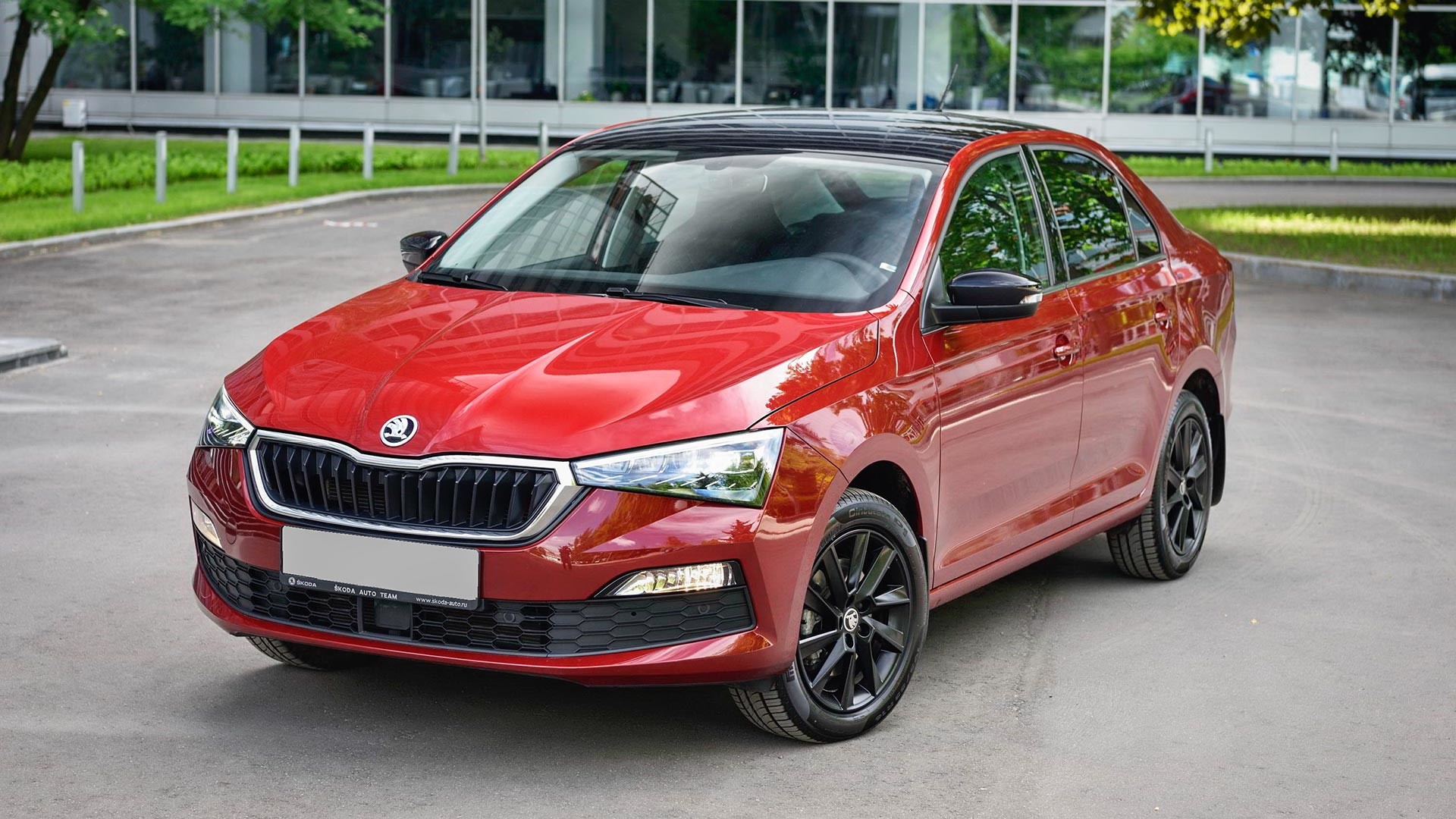
This is another economy class sedan that has won the hearts of many Russian drivers. “The new Rapid is comfortable to drive, there is a lot of automation,” says one owner from St. Petersburg. They go on to write : “Turn the steering wheel and hit the gas, and switch on cruise control on a high-way, and the car will do everything else by itself.”
The Škoda Rapid is assembled at a plant in Kaluga. The simplest version costs 990,000 rubles ($14,000) and already includes a media system with a touch screen and Bluetooth. The most expensive version costs 1.4 million rubles ($19,700).
9. Renault Duster
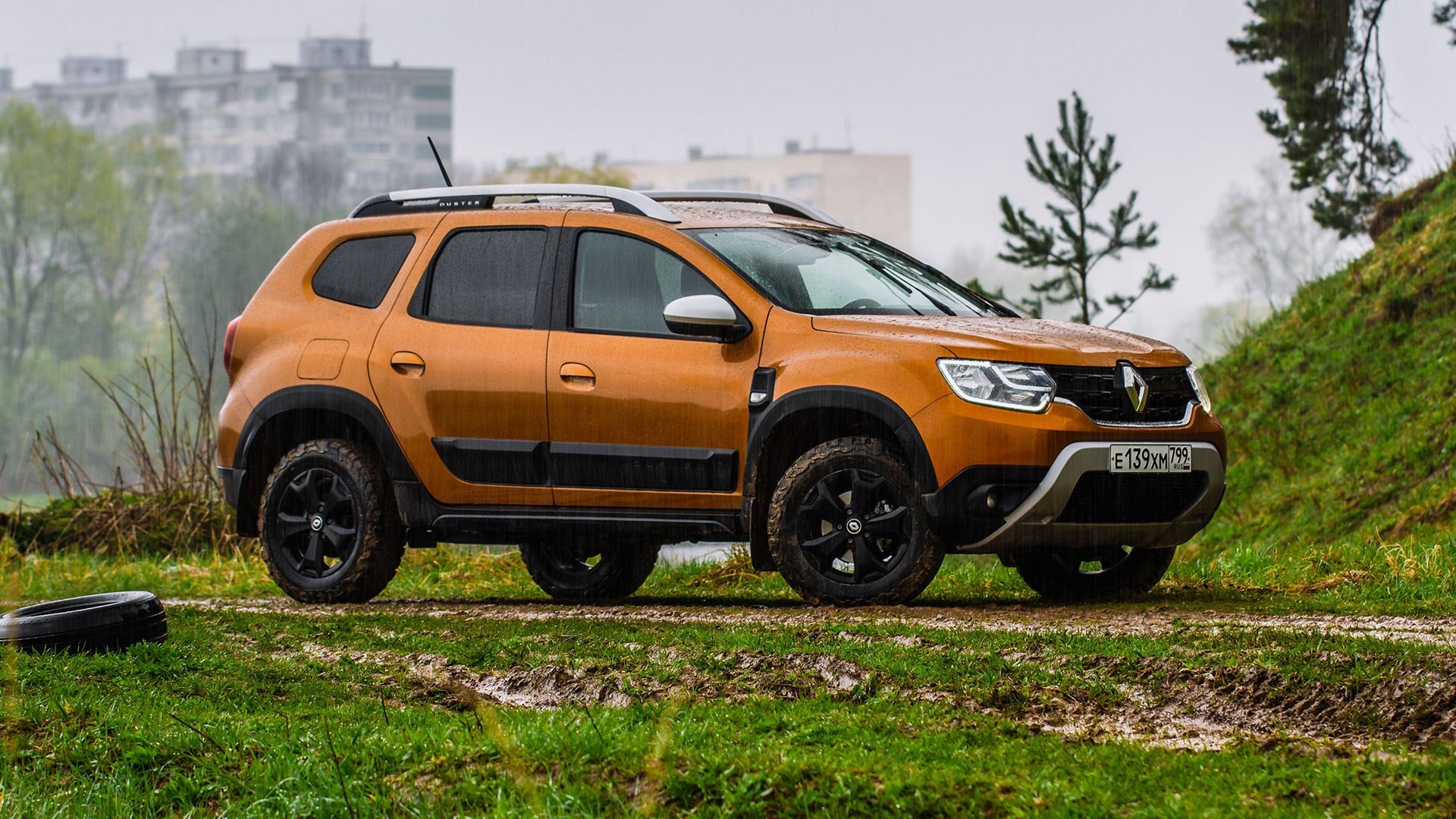
Renault cars are assembled in Moscow. For a long time, the most popular Renault model was the Logan sedan, but this year the Duster SUV took that title. "Who can imagine a life that is no longer just being in a hurry," one driver jokes about driving the car. "The Duster is a family car. The car is enough to cheerfully stay in traffic" writes another.
The price of the simplest model with a manual transmission starts at 1 million rubles ($14,300), while the most expensive 4x4 version is twice as much.
10. Lada Largus VP
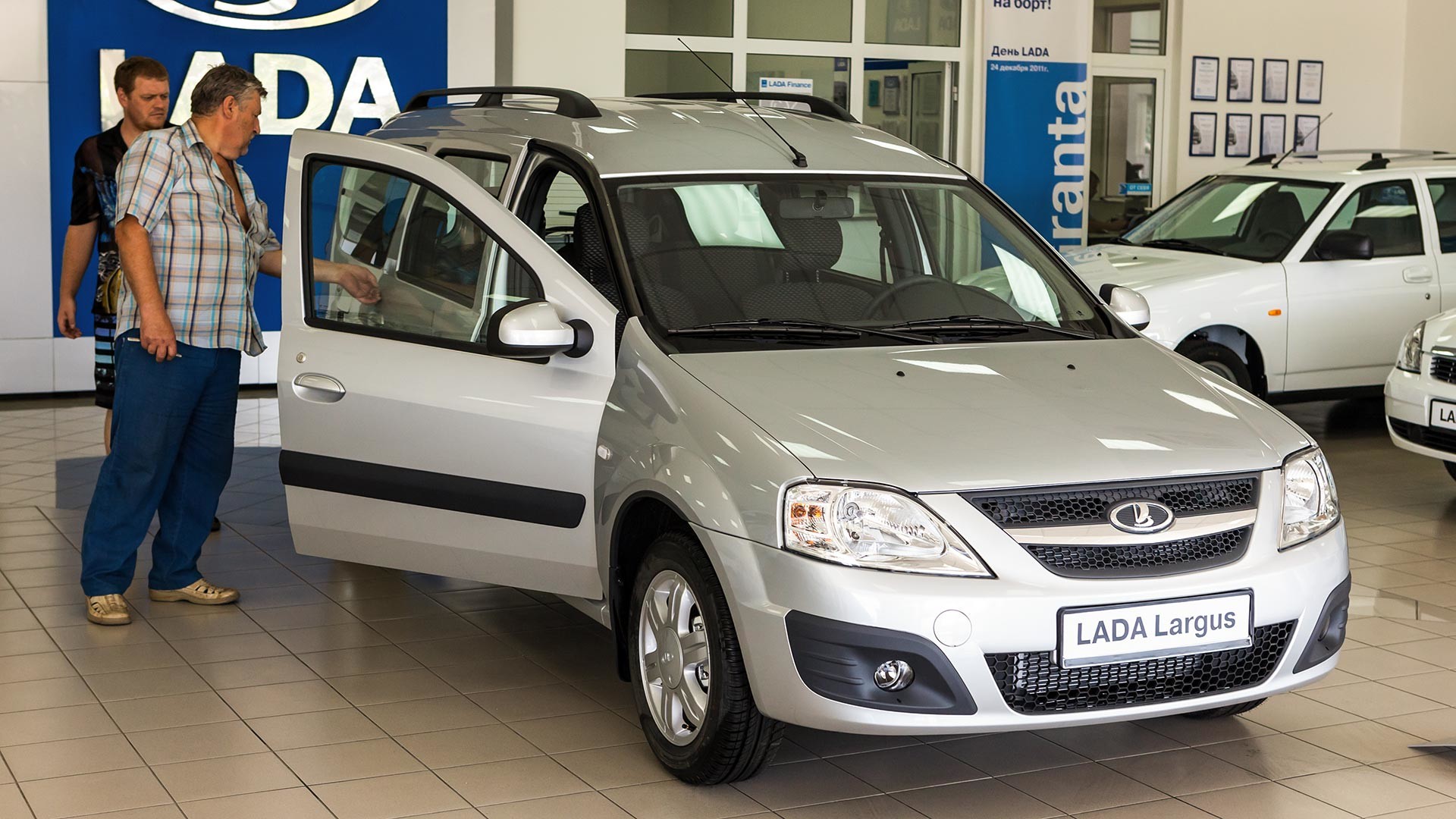
The only wagon model in this list is also produced by the Russian company AvtoVAZ. Largus is a fairly budget car that is popular not only among dacha enthusiasts, but also for commercial purposes. “The main plus is the suspension and stability on the road,” writes a driver from Tyumen (Siberia), “No need to worry about driving the highway on Largus in winter.” All versions are equipped with a manual transmission and cost from 780,000 ($11,000) to 978,000 rubles ($13,700).
If using any of Russia Beyond's content, partly or in full, always provide an active hyperlink to the original material.
to our newsletter!
Get the week's best stories straight to your inbox
- Russian driverless cars are ready to replace taxis. Watch out, hooman!
- Could a Soviet citizen buy a car?
- 5 facts about this amphibious 8-wheel Soviet monster car
This website uses cookies. Click here to find out more.
- International edition
- Australia edition
- Europe edition
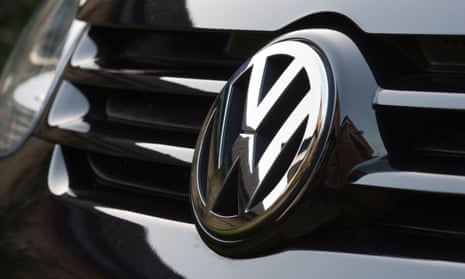
VW owners claim ‘poor design’ left cars open to parts theft costing £1,600
Cruise control sensors taken by thieves, forcing drivers to pay to replace them or face higher insurance premiums
Volkswagen owners targeted by thieves who have stolen cruise control sensors from cars across London are furious after discovering the car’s “poor design” that makes them so easy to steal is set to cost them £1,600 each.
The sensors, which cost about £700 each, are fitted behind the VW badge, and appear to be a popular target for thieves.
A VW specialist in the Midlands said he had experienced a big jump in sensor thefts “in the last few months”, and in recent weeks, motorists across the capital have been reporting thefts on social media groups.
Tara O’Driscoll, from Clapham in south-west London, said she had fallen victim to the crime and had heard of more than 50 other reports of thefts in the borough since posting on social media about her experience. On some London roads, owners have reported that every VW car that features the sensor has had it taken.
She has been told it will cost about £1,600 to replace the sensor on what she described as her “very ordinary” VW Golf.
“Every VW car in our area that has this sensor has been targeted and it has been the talk of the community on WhatsApp and other media, not least as the bills to fix it are so big. It seems the part itself is expensive and only VW can calibrate it to work with your car,” she said.
“People face having to make expensive insurance claims which will only push up their premiums for years to come, or pay the £1,600 upfront.”

The part is vital to the car’s adaptive cruise control (ACC) as it measures the distance to the vehicle in front, and adjusts the driving speed accordingly. However, it is easily accessible and is held in place by three screws.
VW owners first began reporting the theft of ACC sensors in 2016 , and some have been hit by a second theft after the first was replaced.
Owners are questioning why VW has not fixed this known problem. They now want VW to come up with a cost-effective solution – and an improved design to stop it happening again. The company has, so far, refused.
O’Driscoll said: “Given that it is clearly such a poor design, we feel that VW should be making a contribution – or at least doing the work at cost. If we have the work done, what’s to stop it being stolen again the next week?”
Rebecca Phillips, another Clapham resident whose VW Passat was similarly targeted recently, said she was furious that the manufacturer was not offering a cheaper solution.
“When we searched online, it soon became clear this has been happening for years,” she said. “There are videos showing how easy it is to steal these sensors, and yet nothing has been done. Our car is now beeping safety warnings at us and VW has told us not to drive it until it is repaired.”
A VW spokesperson said: “We are sorry to hear about the issues being faced by this group of customers and we have advised them that this is, first and foremost, a matter all victims should discuss with local police. This does appear to be a localised crime issue and we are not aware of similar incidents happening elsewhere in the country.”
The company said it does not believe that this problem can be attributed to a design flaw or defect, and therefore it will not be offering any financial help to the owners.
It said that a missing radar sensor would not result in an MOT failure, as owners have feared.
“As this part is chassis-stamped, it can, once reported to us via the police, be locked so that it is inoperable on another vehicle – and as a result worthless on the black market,” the spokesperson said.
The VW sensors are the latest expensive car parts to be targeted by thieves. There have previously been similar spates of Land Rover headlight and hybrid car catalytic converter thefts.
- Volkswagen (VW)
- Automotive industry
- Consumer affairs
Most viewed
Tips for Safe Driving on Black Ice: A Winter Guide
Many states have mild winters, which means not a lot of snow, and little to no ice. However, that’s a different story for a lot of northern states, such as Minnesota, New York, and Wisconsin. Black ice is different from normal ice which can accumulate on roads and is more dangerous. Let’s discuss black ice and how to safely navigate roads.
What Is Black Ice?
Black Ice is a type of ice that forms on the road’s surface after inclement weather, such as rain, sleet, or snow. Black ice can also form when snow thaws and refreezes. The name stems from the color it appears while it’s on the road’s surface. Since ice is transparent, it takes on the color of the pavement, which is usually black. Black ice is one of the most dangerous hazards and challenging obstacles you can face while driving.
Why Is Black Ice Dangerous?
Black ice is dangerous because it’s difficult to see. By the time you realize there’s black ice, you may have already driven over it and lost control of your vehicle. Many drivers lose control of their vehicles in this scenario because they brake suddenly or steer in a certain direction too hard.
More than 1,200 people are killed and over 115,000 people are injured in auto accidents caused by icy and snowy road conditions each year. Some regions of the U.S. can’t completely avoid icy and snowy road conditions. However, regardless of where you live, knowing how to safely navigate icy and snowy roads can help decrease the likelihood of you being involved in an auto accident.
How Can You Tell If Black Ice Is On the Road?
Great question! Since black ice is transparent, how can you tell if black ice is on the road? Although black ice is transparent, it will appear black because of the color of the pavement, making it difficult to see.
However, black ice is glossy and dark and doesn’t look like other parts of the road, so you need to focus on the road ahead to spot black ice. During the day, black ice has a shiny appearance, making it easier to detect. At night, it can be difficult to spot because black ice has a dull and dark appearance.
What’s the Difference Between Black Ice and Normal Road Ice?
Black ice is similar to normal road ice but the difference is how they form. Black ice is created when moisture in the air freezes when it comes into contact with the surface of a cold road. Unlike normal road ice, black ice is invisible. Black ice commonly forms when temperatures decrease during the evening or the early morning hours.
What Are the Risk Factors Associated With Black Ice?
The following are different risk factors that are associated with black ice:
- Temperature – black ice often forms when air temperatures are at or below freezing (32°F). The most important factor is the temperature of the pavement. If the road’s surface is below freezing, even if the air temperature is not, there is a chance that black ice can form.
- Time of day – black ice is more likely to form between sunset and sunrise. During these times, temperatures drop to their lowest.
- Location – black ice commonly forms on roads that have a lot of trees. Due to the shade trees provide, the temperature is lower, making it the perfect location for black ice to form. This type of ice can also form on back roads, in tunnels, and overpasses. Since overpasses and bridges are elevated structures, they are more susceptible to the formation of black ice.
Expert Advice on Driving On Black Ice
Driving on black ice is dangerous. If you notice black ice patches on the road, you’ll want to proceed with extra caution. Here’s expert advice on how to navigate the road safely when black ice is on the road.
Use the Proper Tires
Winter or snow tires are the best to have on your vehicle during the winter months. Studded snow or winter tires will help you maintain control of your vehicle and traction, which is essential for traveling in icy and snowy conditions.
Maintain a Safe Distance From Other Vehicles
In general, you should always maintain a safe distance between your vehicle and the vehicle in front of you. When you’re driving in icy and snowy conditions, you should double the distance at a minimum.
Keeping more distance between your vehicle and the vehicle in front of you gives you time to react to other drivers should they make drastic changes in their driving behavior, such as changing lanes without a turn signal. Having a lot of distance between vehicles is also good if you lose control of your vehicle.
Steer Straight
When you’re driving in snowy or icy conditions, it’s easy to lose control of your vehicle. Many drivers lose control of their vehicle when driving on icy roads because they jerk the steering wheel to prevent the car from going in a specific direction.
Turning the steering wheel too quickly or too hard can cause your vehicle to spin out. To avoid a spin-out or an accident, keep the steering wheel straight while driving. If your vehicle skids or fishtails, gently turn the steering wheel in the direction your vehicle is skidding to regain control.
Remain Focused
You should always stay focused on the road when you’re driving. However, when you’re driving in icy and snowy conditions, you need to pay even more attention to the road and your surroundings.
Driving on black ice always poses a risk of an accident. However, it’s safer when you’re prepared to react appropriately in a dangerous situation. Knowing how to maintain control of your vehicle is essential when icy roads are a factor.
Maintaining Control of Your Vehicle
Maintaining control of your vehicle is essential for staying safe while driving on icy roads and in snowy weather conditions. Remember to drive, turn, and brake slowly. Taking your time and driving slowly to your destination is one of the best ways to maintain control of your vehicle while driving on black ice. Spin-outs and skids are much easier to manage than if you were traveling at high speeds.
Take Caution When Driving Over Bridges
When you’re driving over bridges, pay extra close attention to the road to spot black ice patches. Since cool air decreases the temperature of the road from underneath and on the surface, the pavement on the bridge will freeze a lot quicker than roads.
Avoid Accelerating Too Quickly or Harshly
When you’re driving in unfavorable conditions, such as ice and snow, you should avoid pushing the accelerator too quickly. Accelerating too quickly can cause you to quickly lose control of your vehicle. When you need to increase your speed, gently press the accelerator.
Don’t Use Cruise Control
Avoid using cruise control in unfavorable weather conditions. While cruise control is beneficial in many situations, such as long road trips, it isn’t ideal for icy and snowy road conditions. Not using cruise control gives you time to react in dangerous situations.
Avoid Sudden Braking
If you hit a patch of black ice, the first thing that probably comes to your mind is to slam your brakes. Slamming the brakes is one thing you DON’T want to do because you could lose total control of your vehicle, causing an accident. To avoid losing control of your vehicle, gently press your car’s brakes or use your vehicle’s automatic braking system to decrease your vehicle’s speed.
Don’t Drive If You Don’t Have To
If you don’t have to drive, don’t. We’ve provided different techniques you can use to add an extra layer of security when you’re traveling on icy and snowy roads, but the best way to stay safe is to not drive.
When you’re not on the road, you avoid all risks of being involved in an accident, damaging other people’s property, and damaging your vehicle.
Although there’s no guaranteed way to stay safe when you’re traveling on icy and snowy roads, the tips we’ve provided will help you navigate these roads. Make sure you’re paying attention to your surroundings and remaining alert. Stay safe during the winter. Happy driving!
- NURBURGRING WEBCAMS
- WORK FOR US

Hyundai Chasing Pikes Peak EV Glory With Four Ioniq 5 Ns

First Look: New Toyota 4Runner Trailhunter Is A Turn-Key Overlanding Machine

2025 Toyota 4Runner Is The Tacoma Of SUVs And It’s Coming For The Bronco
Editor's picks.

Dodge Hornet Outsells Alfa Tonale 10:1, Stellantis Sees 10% Drop In Q1 Sales
Ford Pickup Truck Driver Takes A Back Seat (Literally) At 80 MPH On Cruise Control
Ford driver filmed callously putting his own life and the lives of others at risk

by Sebastien Bell
- A Ford F-450 driver posted a video of himself laying across the rear seat of his truck, leaving no one in the driver’s seat.
- No driver assistance system available to the public is good enough to accomplish the feat safely.
- Making matters worse, the F-450 is not even sold with Ford’s best driver assistance system, BlueCruise, meaning that this driver is relying entirely on adaptive cruiser control and lane keep assist.
It has become dishearteningly common to see Tesla drivers abuse their vehicles’ driver assistance systems, but so far other brands’ drivers have been better behaved. However, a new video from a Ford driver suggests that the problem of overreliance on automated driving systems could become an industry-wide phenomenon.
In a video posted to Instagram by user @__c.crawford__, a man can be seen lying across the rear bench seat of a truck identified as a Ford F-450 . As the camera pans to the front of the vehicle, a vacant driver’s seat can be seen, and the caption “F450 driving itself” is shown on the screen.
Read: NHTSA Probes Ford’s BlueCruise ADAS After Fatal Nighttime Collisions
Based on the speedometer, the truck is traveling at more than 80 mph (129 km/h) in this video , which was first noticed by The Drive . A pair of bags are set on the left spoke of the steering wheel, likely to trick the lane-centering system into believing that a driver’s hand is on the wheel. The cameraman, filming from the passenger’s seat, says, “This is probably the most nerve-racking shit I’ve ever done.”
And so it should be, because it’s a colossally dangerous thing to do, putting the lives of both of the Ford’s occupants at risk, as well as those of other people on the highway. There is no car on the highway that can pull off this stunt legally or safely, least of all the F-450.
View this post on Instagram A post shared by Cameron James (@__c.crawford__)
Although Ford does offer a Level 2 driver assistance system called BlueCruise — which, for the record, requires an attentive driver to be at the wheel at all times — the service is not offered on the F-450.
Instead, this “stunt” is likely being pulled off via the use of adaptive cruise control and lane centering assistance technology. Although these systems keep a vehicle in its lane, they are not designed to take over the task of driving completely.
Ironically, they are such low-tech driver assistance technologies that they are also probably why the truck is so easily fooled. Vehicles equipped with BlueCruise are designed to slow down and stop if the system believes the driver isn’t paying enough attention to the road.


The What and How of Adaptive Cruise Control
H itting the road for a long trip? Here's your new best friend: Adaptive Cruise Control (ACC) . This technology is becoming increasingly standard on many car models, and for good reason! ACC takes the stress out of highway driving by automatically adjusting your speed to match the car in front of you. It also helps maintain a safe following distance, making your drive more relaxing and secure.
How ACC works
Adaptive Cruise Control (ACC) uses a smart team of sensors. Most systems rely on a combination of a radar and a camera, depending on the carmaker. The radar acts like a super-sensitive echolocation system, sending out signals that bounce off the car in front of you to measure how far away it is. The camera works like an extra set of eyes, picking up visual details to confirm what the radar detects. Together, they create a more accurate picture of the road ahead.
One of the biggest perks of ACC is that it can help you avoid collisions . If the system detects a slowing car ahead or a potential hazard, it'll typically warn you with a light on your dashboard and an audible beep . If the system senses you're not responding and a collision is imminent, some ACCs can automatically apply the brakes to help slow you down.
The development of ACC
While some advanced ACC systems can detect lane changes , it's important to remember they typically won't initiate them for you. However, they can make lane changes smoother by adjusting your speed to match surrounding traffic. Once the coast is clear, ACC helps you return to your preferred cruising speed, keeping your drive comfortable and controlled.
All in all, Adaptive Cruise Control (ACC) has become a game-changer for highway driving, offering a double dose of benefits: safety and comfort. ACC helps reduce the risk of collisions and takes the stress out of long stretches of road. It's a clear example of how the auto industry is constantly innovating to make driving safer and more enjoyable for everyone.
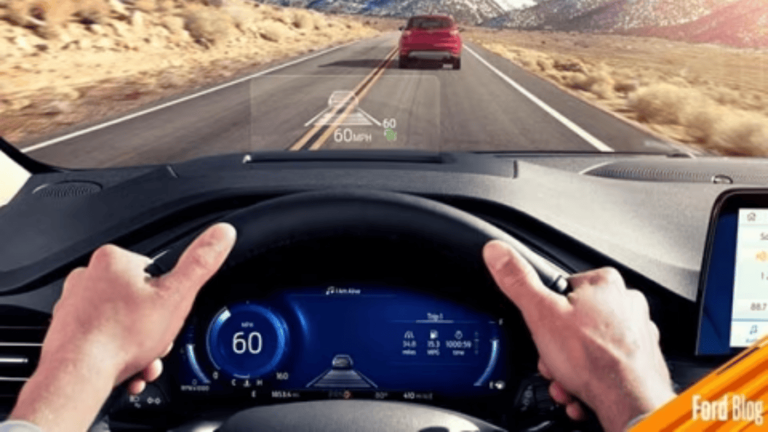

IMAGES
VIDEO
COMMENTS
The cruise control system controls the speed of your car the same way you do -- by adjusting the throttle position.But cruise control actuates the throttle valve by a cable connected to an actuator, instead of by pressing a pedal.The throttle valve controls the power and speed of the engine by limiting how much air the engine takes in (see How Fuel Injection Systems Work for more details).
For your car, check the manufacturer's manual for the location and specific instructions. To set cruise control, press the ON/OFF button or switch. If you press this button again, it typically turns the system off. The Res + (resume / increase seed) button increases the cruising speed by 1 mph, while the Set - (set speed / reduce speed ...
Cruise control in a car replicates the inputs of a driver to control the vehicle's speed. But instead of pressing the accelerator pedal, it uses a different mechanism to maintain a constant cruising speed. Initially, the system used a cable to control the accelerator (throttle valve). You can find these mechanisms in older cars.
Know the Controls. You operate cruise control by either a stalk on the steering column or several buttons on the steering wheel. These include an on-off switch; a "set" button to select the speed ...
Cruise control is an electronic device within your vehicle that controls the speed of your vehicle. It allows the driver to maintain a constant speed of 25 mph without holding their foot on the accelerator. Although the feature has been around for 70 years, automotive manufacturers continue to improve upon the technology to provide drivers with ...
3. Drive your car until you reach your desired speed and hit "SET.". Cruise control will set the car to hold steady at a particular speed. Once you reach the speed you want (keep an eye on your car's speedometer), push the "SET" button.
Cruise control is a feature allowing the driver to set a predetermined speed, which the system's computer maintains until the driver adjusts the speed, taps the brake, or disengages the system ...
Cruise control, also known as speed control, is an electronic system that allows you to maintain a specific speed without manually controlling the accelerator pedal. The system uses sensors and electronic components to control the throttle and keep your car moving at a desired speed.
Cruise control can be advantageous for drivers in other ways too. In its capacity to ensure a vehicle remains at a steady speed, where possible, it can boost driving efficiency. According to ...
1. Definition. Cruise control is an electronic system that allows a vehicle to maintain a consistent speed, without the need for continuous driver input on the accelerator pedal. 2. Activation. Cruise control systems are typically activated by pressing a button or switch located on the steering wheel or dashboard. 3. Function.
Common cruise control icon on dashboards specified by ISO-7000-2047, ISO 2575:2010, and ISO 6727. Another icon exists for the more modern adaptive cruise control, but some cars also use the cruise control icon for the speed limiter function, which has no standard icon.. Cruise control (also known as speed control, cruise command, autocruise, or tempomat) is a system that automatically controls ...
Set the cruise control: Once you've switched the system on, press the set button. This will communicate with your car to hold the current speed. In most vehicles, this will turn the dashboard indicator green. After the cruise control is set, you can remove your foot from the accelerator and the car should maintain its speed. 4.
With cruise control, drivers need to brake to slow down as they close in on a slower vehicle in traffic. With adaptive cruise control, the system makes these braking inputs automatically, and the ...
Cruise control was originally only found on high-end luxury cars, but now even the smallest cars often have it fitted as standard. If you have never used cru...
To use cruise control, you can typically press buttons on your steering wheel to activate the system, set your speed, adjust your speed up or down within the system, and deactivate the system. Using cruise control lets you set a speed for your car to maintain even if you take your foot off the gas. On long trips, it can reduce driver fatigue.
Adaptive cruise control (ACC) is a system designed to help vehicles maintain a safe following distance and stay within the speed limit. This system adjusts a car's speed automatically so drivers ...
This cruise control is a kind of driving on auto-pilot mode. It automatically controls the car's steady speed by taking the control of the throttle body. It comes in cars having a drive-by-wire system where an electronically controlled throttle body is manipulated by a cruise control computer. The cruise control computer is a small computer ...
Simple to use, all you need to do is turn on the system in your vehicle, reach your desired cruising speed, and set it. The system then assumes control of the accelerator, maintaining the set ...
The cruise control system uses an actuator which controls the accelerator allowing the car to continue driving at a set speed. The actuator is connected to the throttle via a cable. During cruise control, the cable is not just monitoring the car's speed but also the power of the engine. It ensures that the engine takes in the exact amount of ...
Here is an explainer about the cruise control. Cruise control: What is it. Cruise control is a feature under the ADAS suite, which allows the driver to set a particular speed for the car.
Cruise control cars in India. Earlier, only the higher-end cars used to have this feature but now we have cars priced below Rs. 10 lakh with cruise control. The prime examples are the Hyundai Nios ...
Be careful if your car has cruise control. In the United States, the National Highway Traffic Safety Administration (NHTSA) estimates that 16,000 crashes a year are caused by drivers pushing the ...
Today's best electric cars and PHEVs come with a slew of safety features, like dynamic cruise control that I got to try with the Lexus TX550H+. Not only does it automatically apply acceleration ...
3. Hyundai Creta. Segey Konkov/TASS. This crossover is one of the most inexpensive cars in its class in Russia. Its price ranges from 1.2 million rubles ($17,000) to about 2 million rubles for the ...
The Ford Crown Victoria Police Interceptor (colloquially referred to as the CVPI, P71, or P7B) is a four-door, body-on-frame sedan that was manufactured by Ford from 1992 to 2011. It is the police car version of the Ford Crown Victoria and was the first vehicle to use the Ford Police Interceptor name.. From 1997 to 2013, the Ford Crown Victoria Police Interceptor was the most widely used ...
The part is vital to the car's adaptive cruise control (ACC) as it measures the distance to the vehicle in front, and adjusts the driving speed accordingly. However, it is easily accessible and ...
Don't Use Cruise Control. Avoid using cruise control in unfavorable weather conditions. While cruise control is beneficial in many situations, such as long road trips, it isn't ideal for icy and snowy road conditions. Not using cruise control gives you time to react in dangerous situations. Avoid Sudden Braking
Making matters worse, the F-450 is not even sold with Ford's best driver assistance system, BlueCruise, meaning that this driver is relying entirely on adaptive cruiser control and lane keep assist.
5 likes, 0 comments - carloungesa on May 13, 2024: " 2019 Mercedes-Benz V-Class V250d Avantgarde AMG Line Panoramic Sunroof Adaptive Cruise Control Automatic Tr...". Gyalchester
Adaptive Cruise Control (ACC) uses a smart team of sensors. Most systems rely on a combination of a radar and a camera, depending on the carmaker. The radar acts like a super-sensitive ...